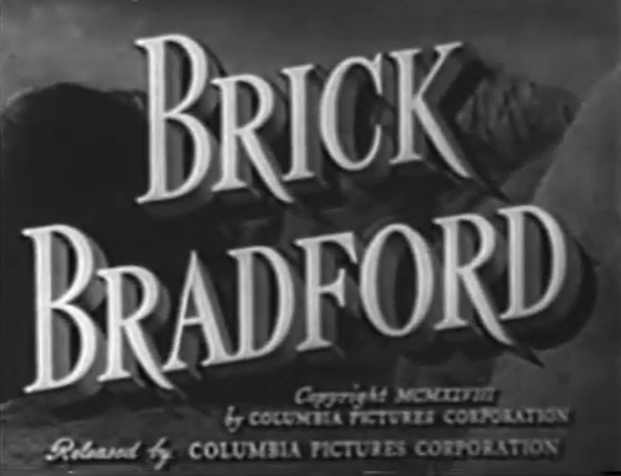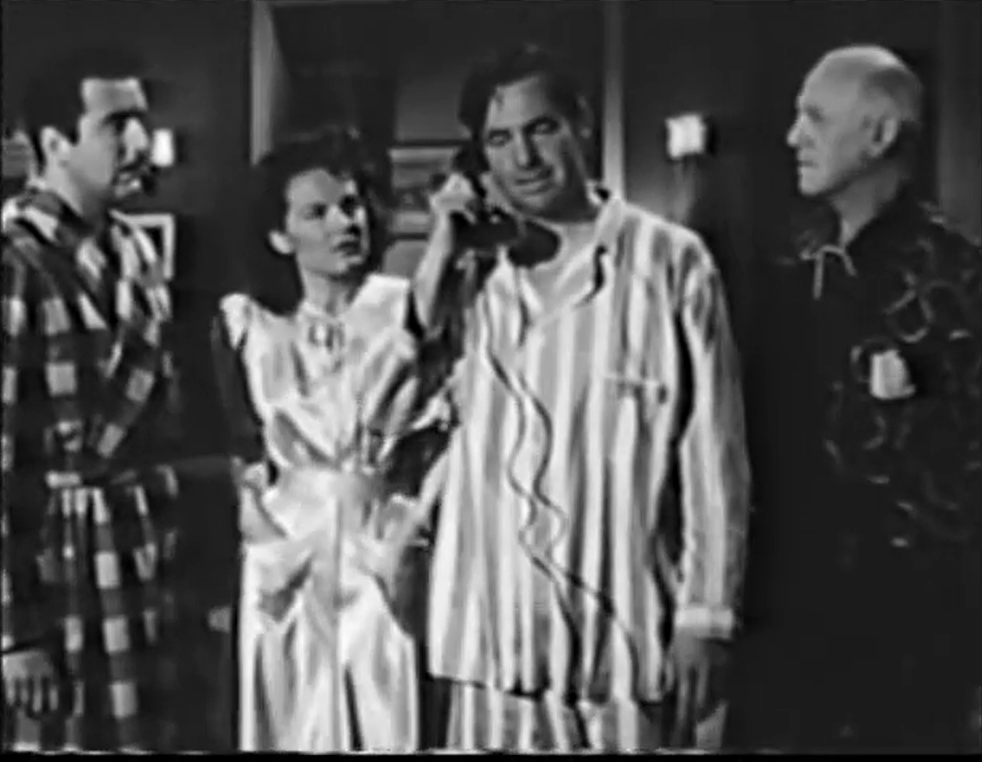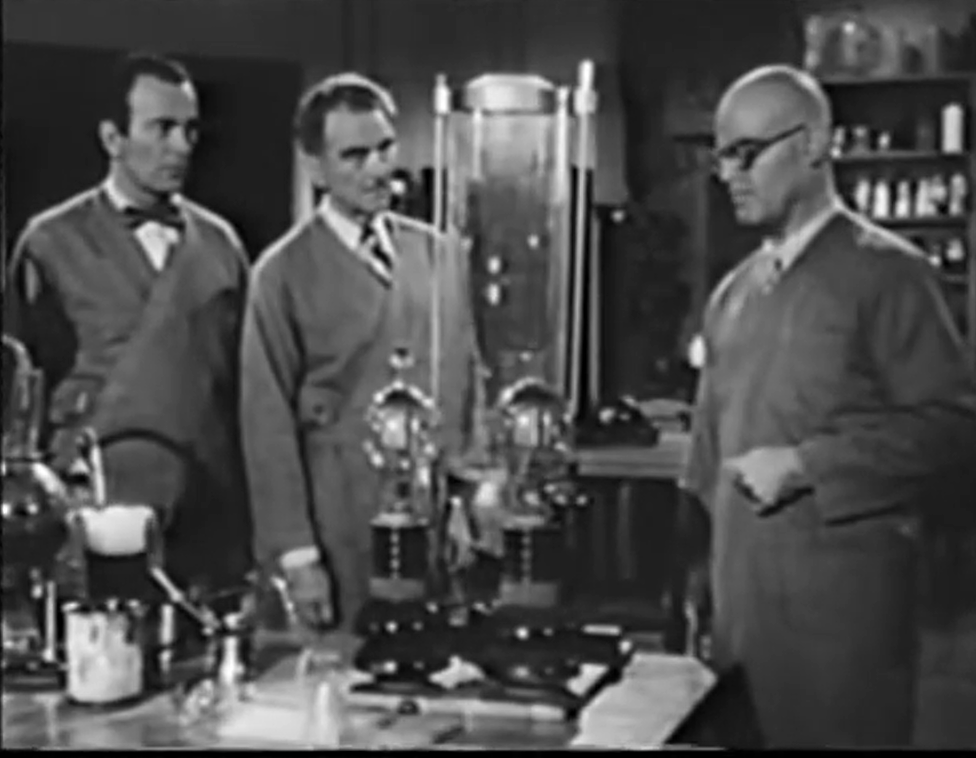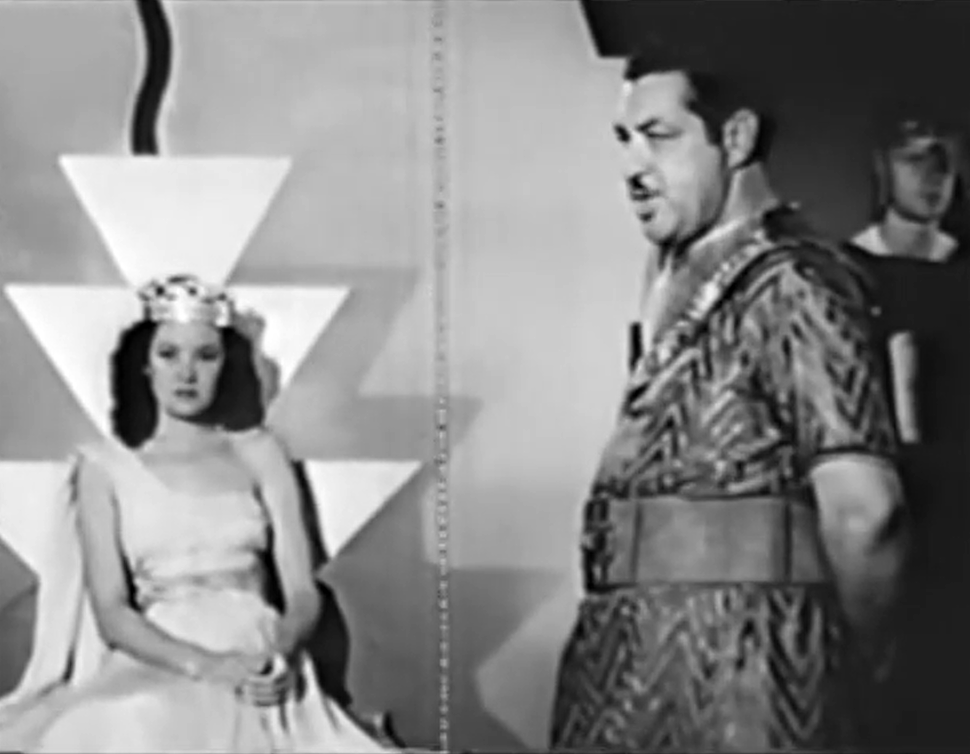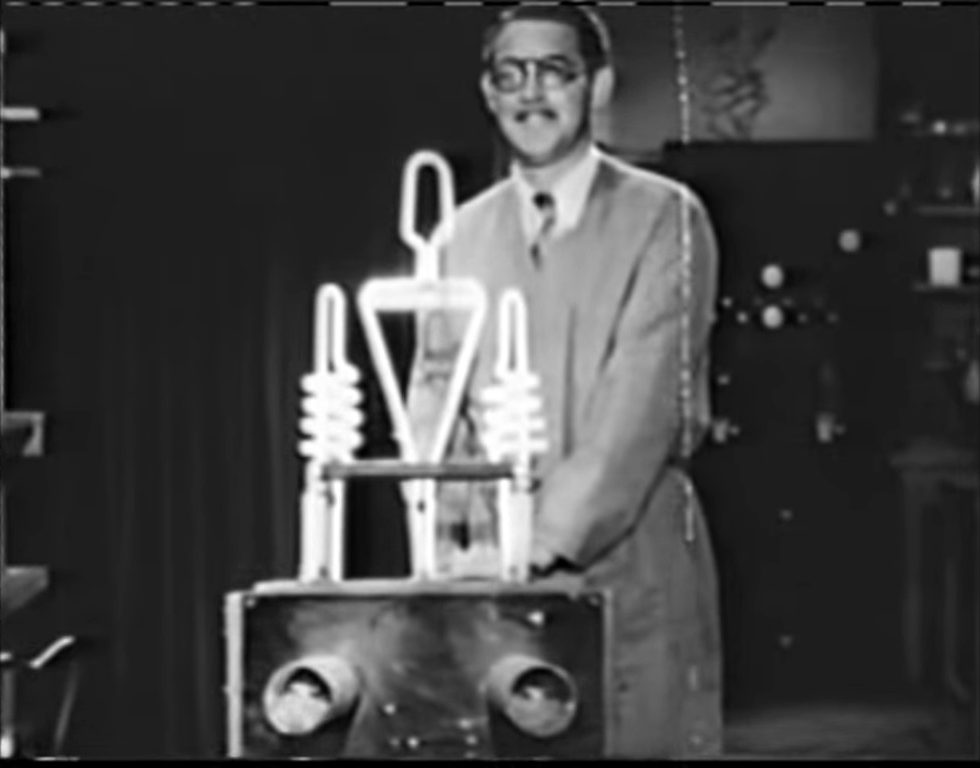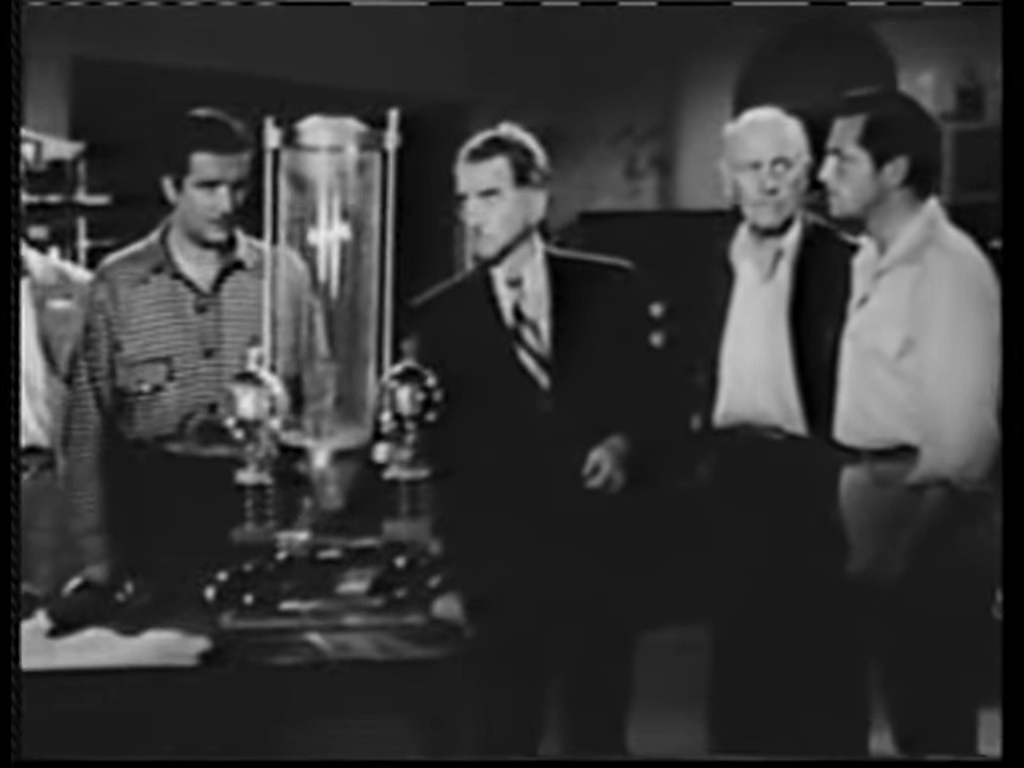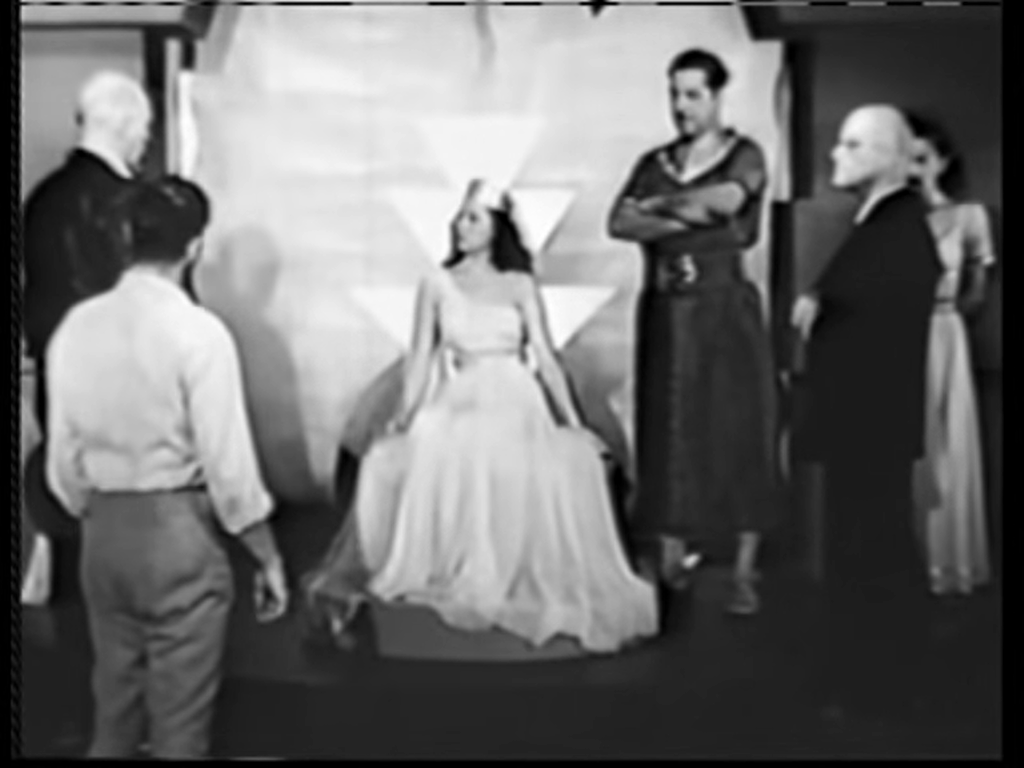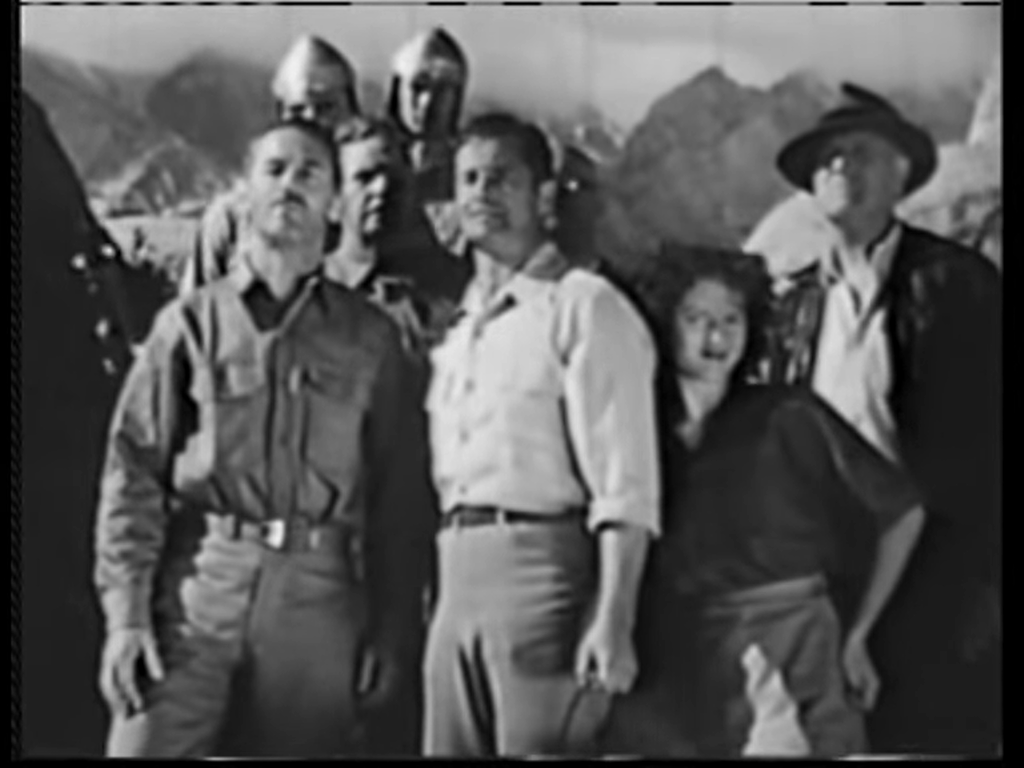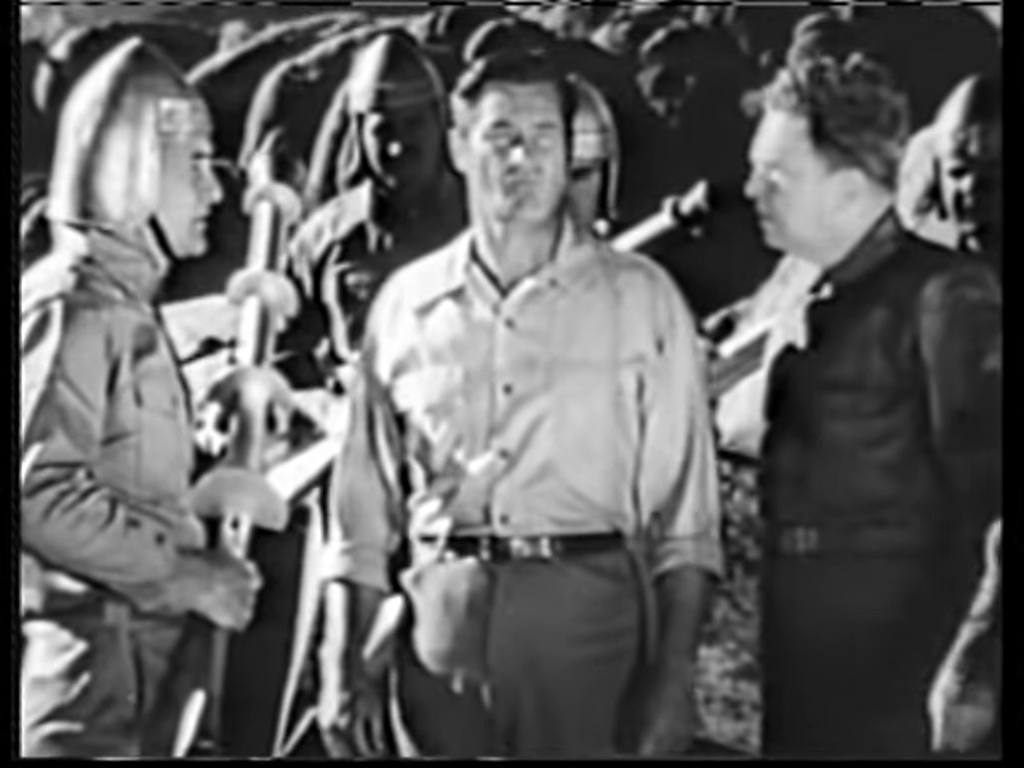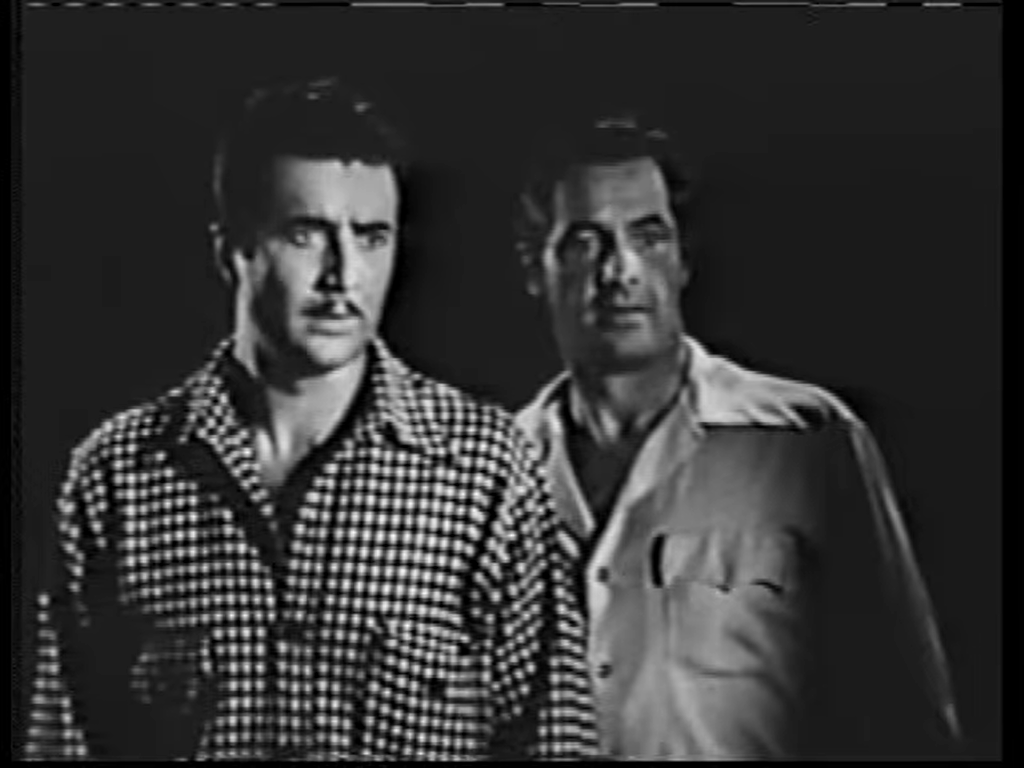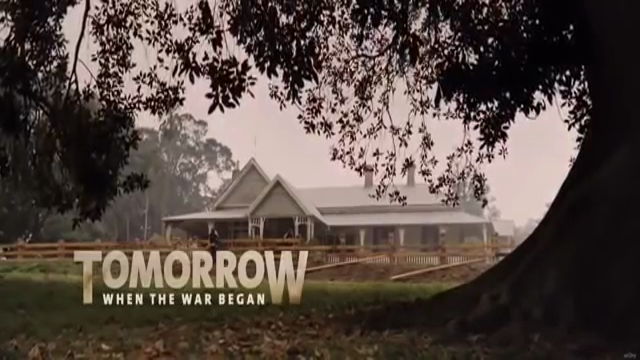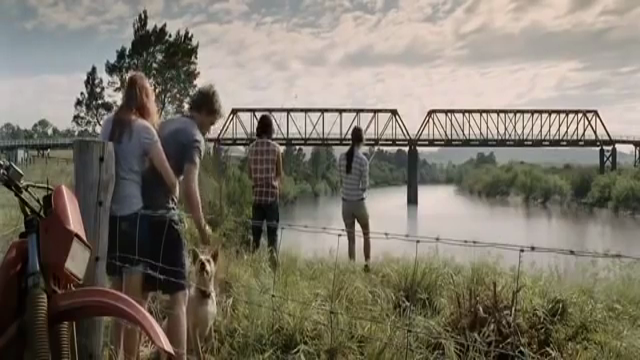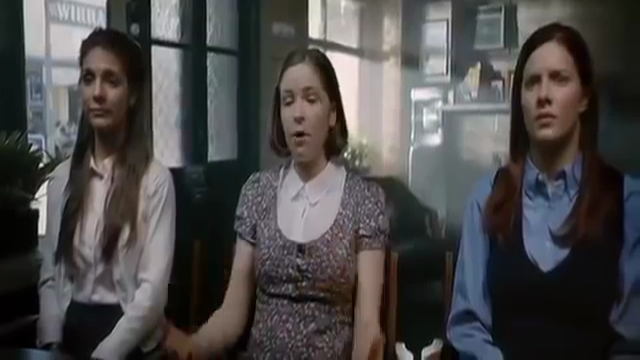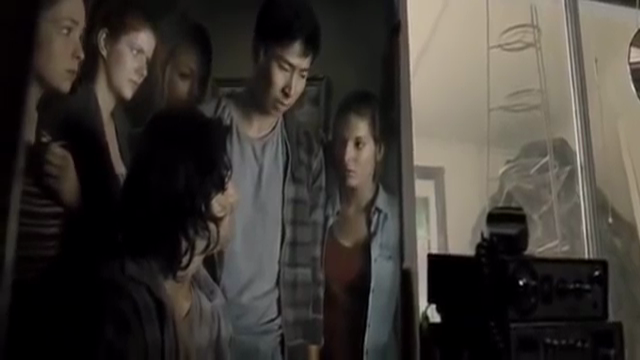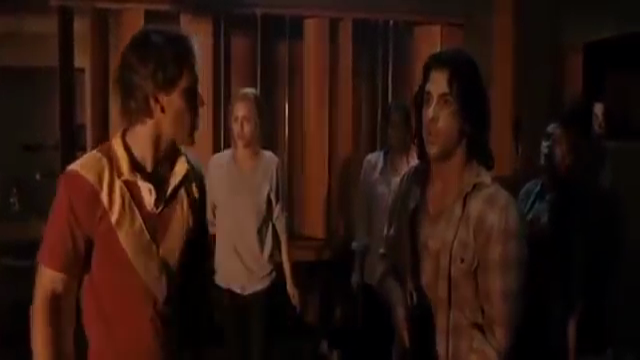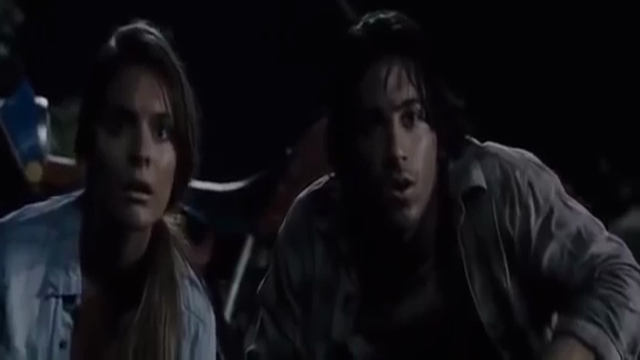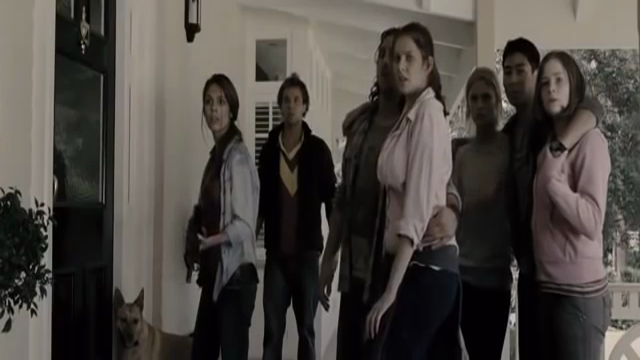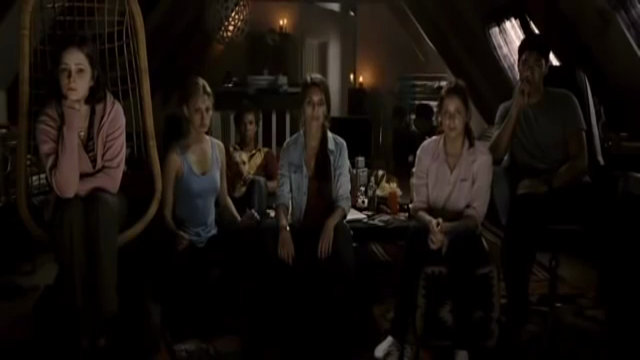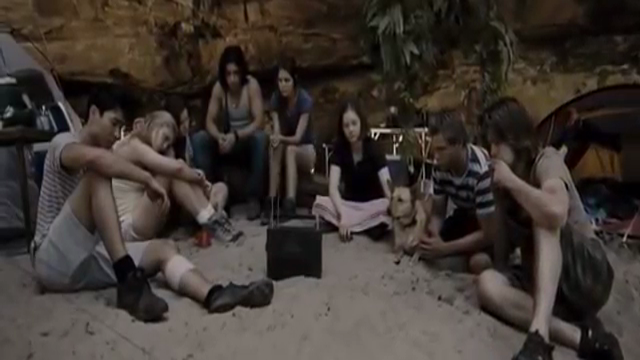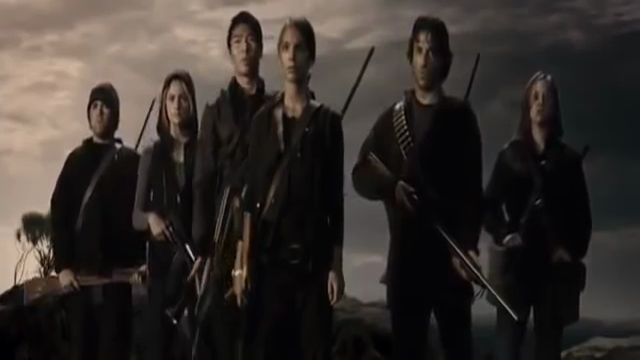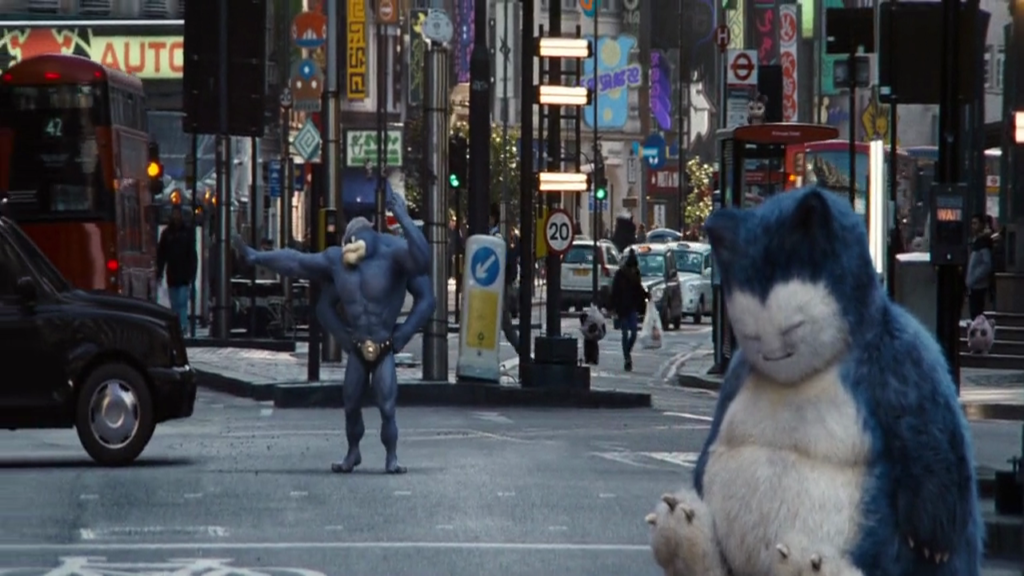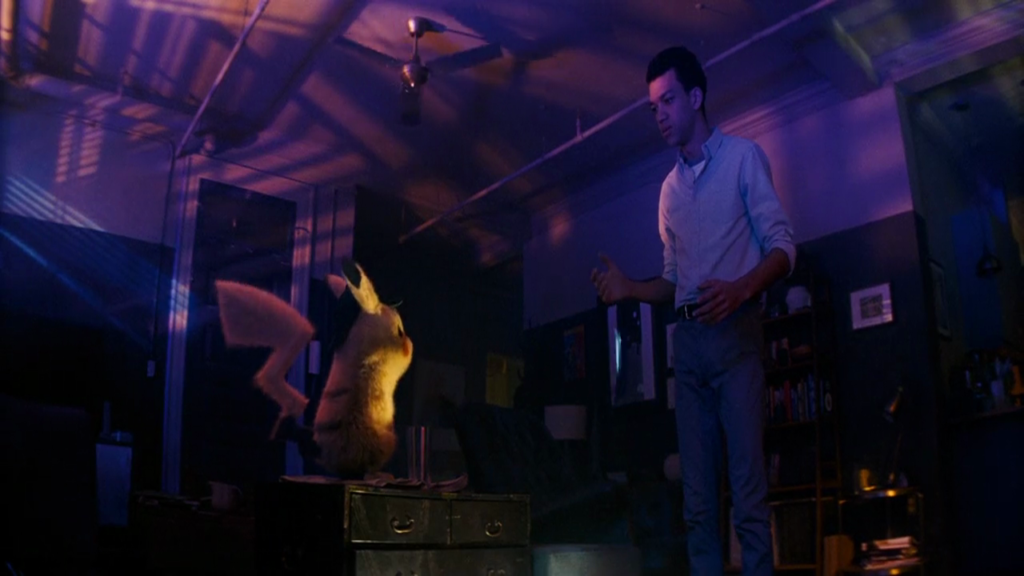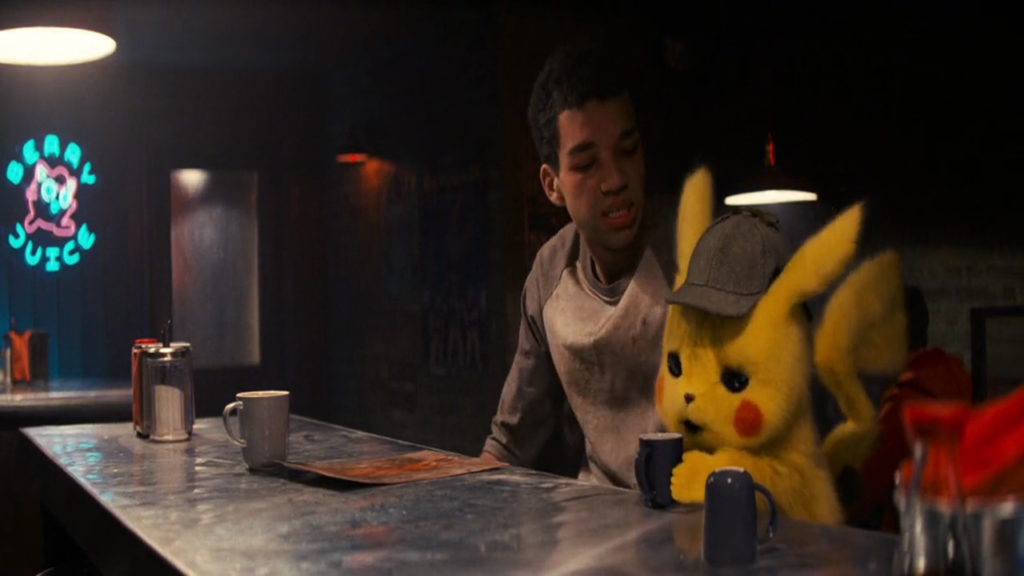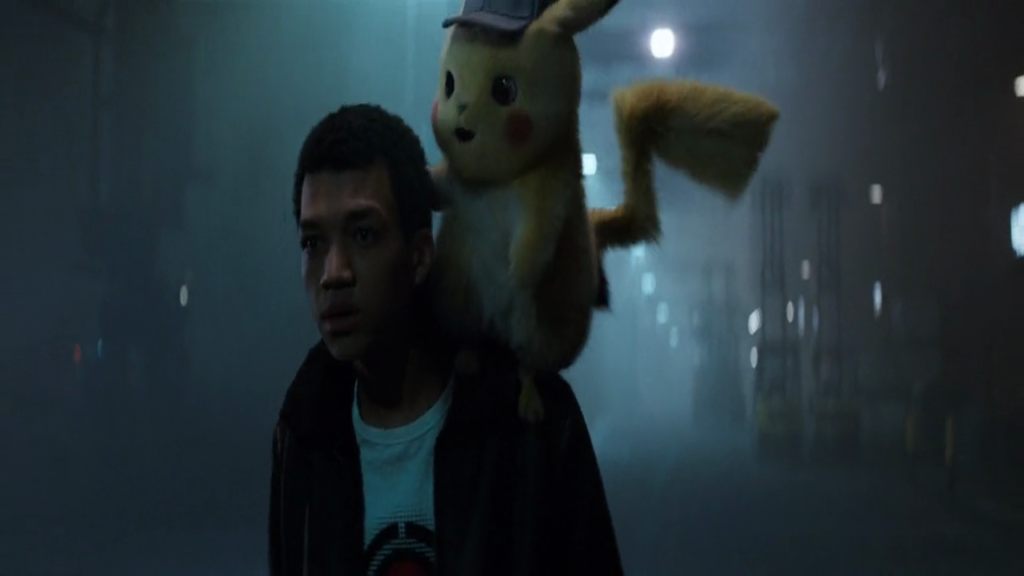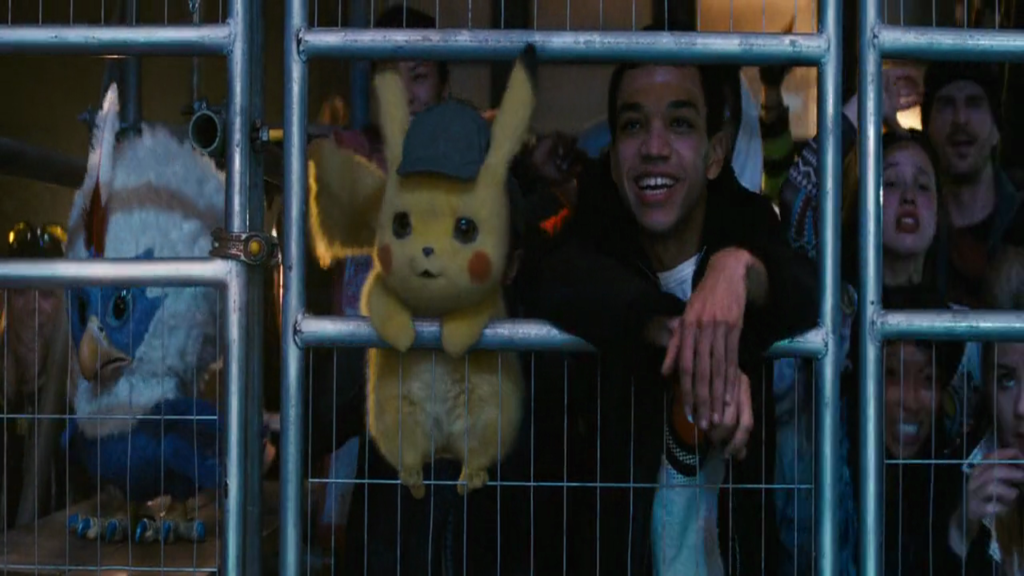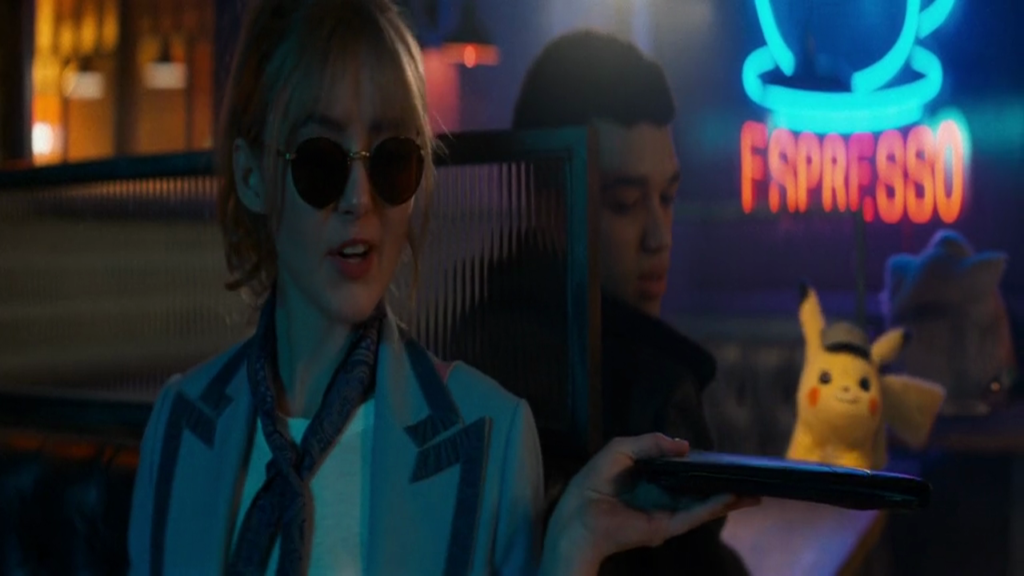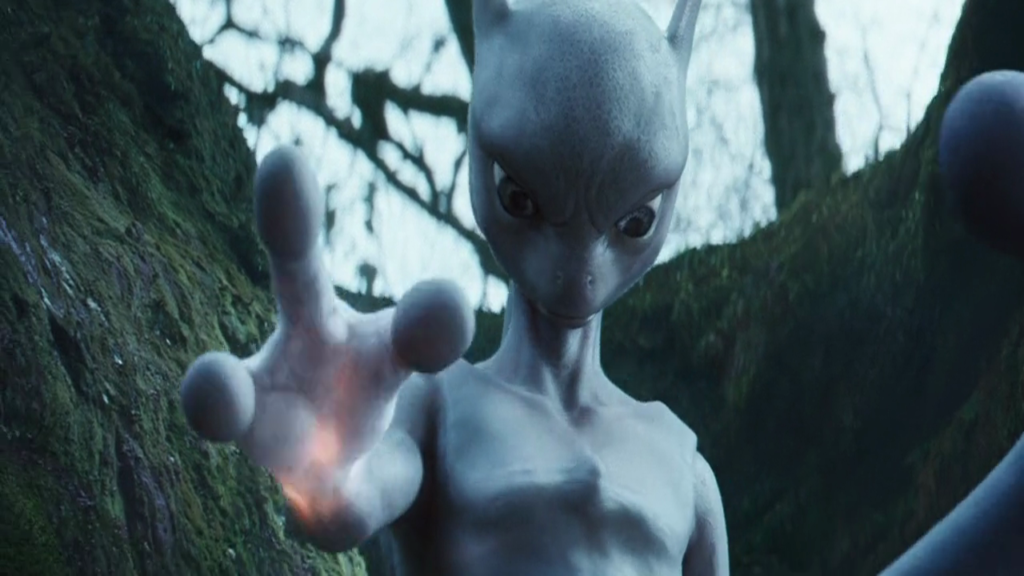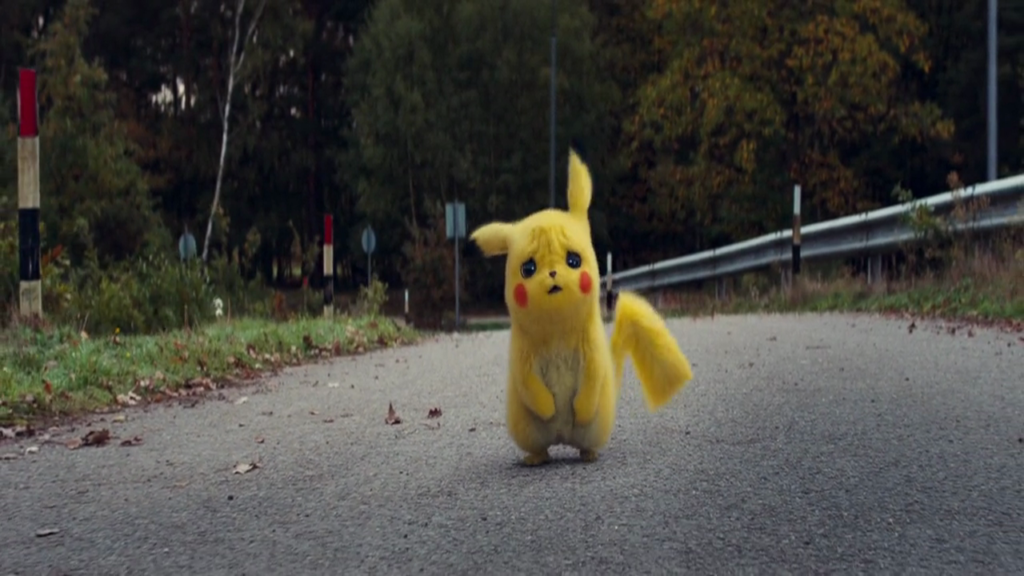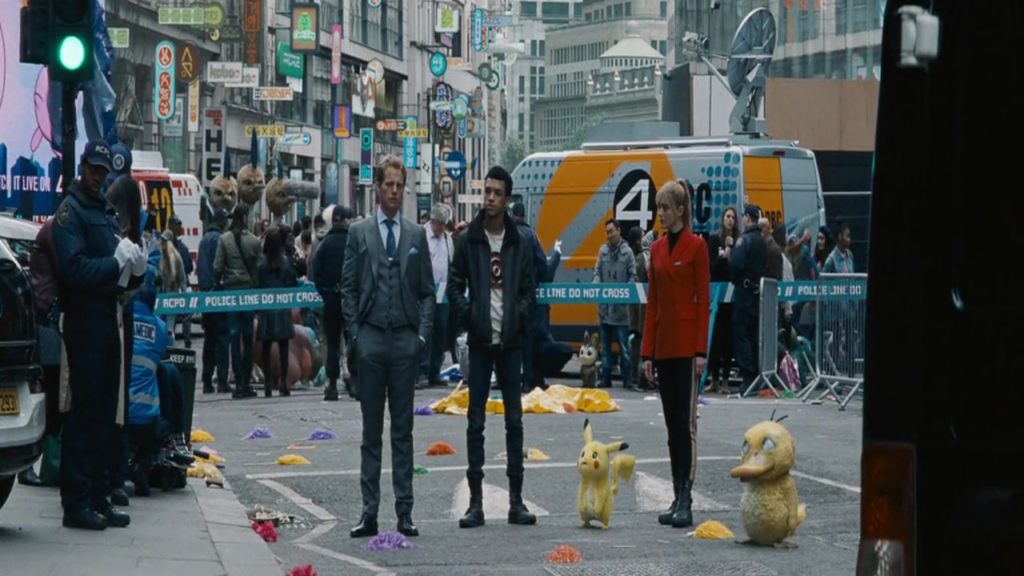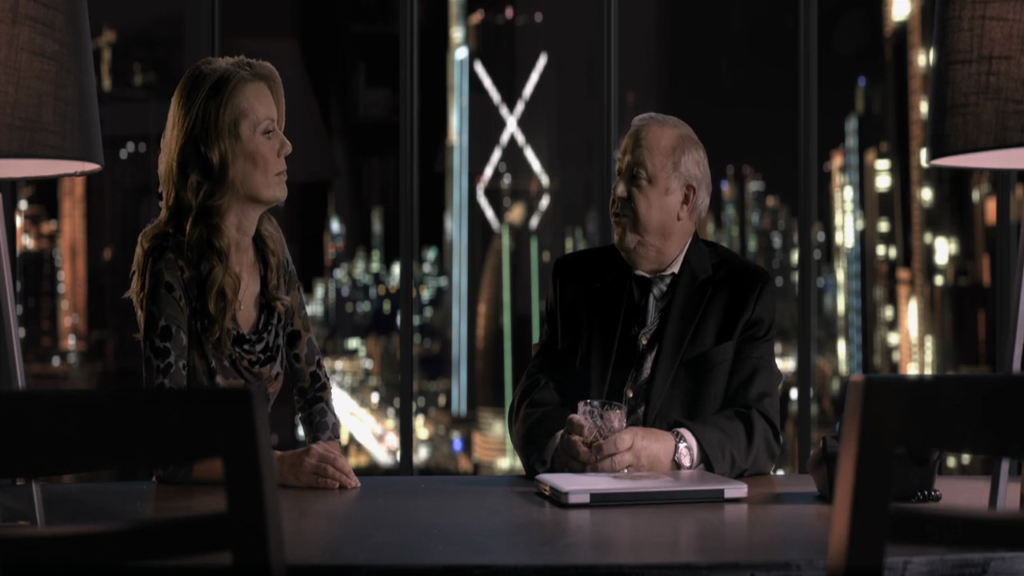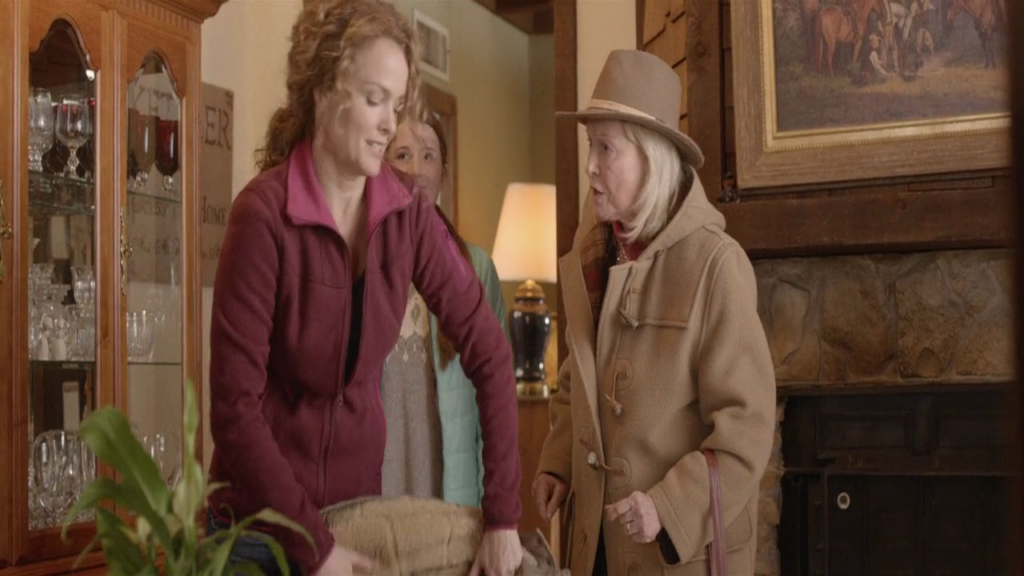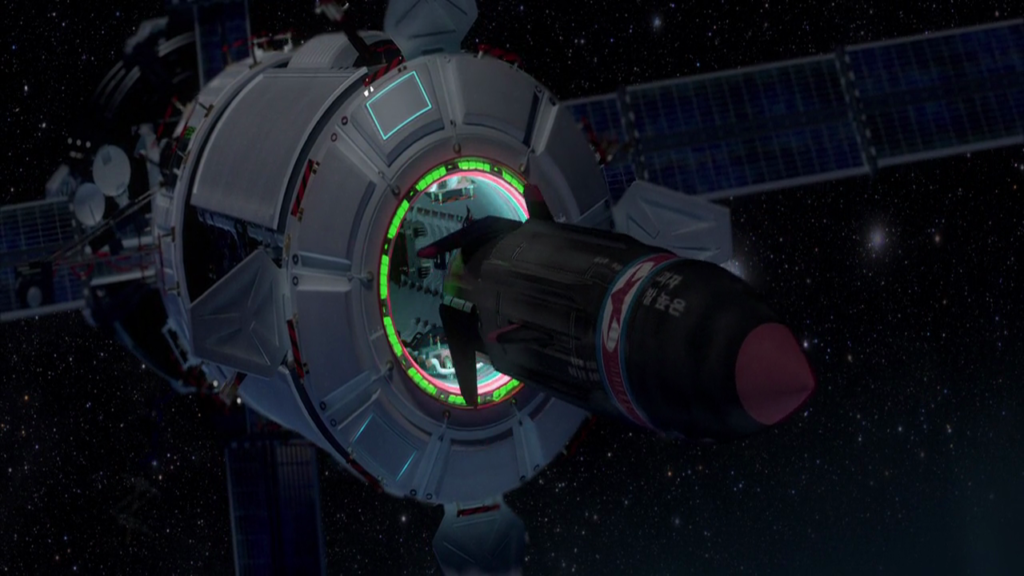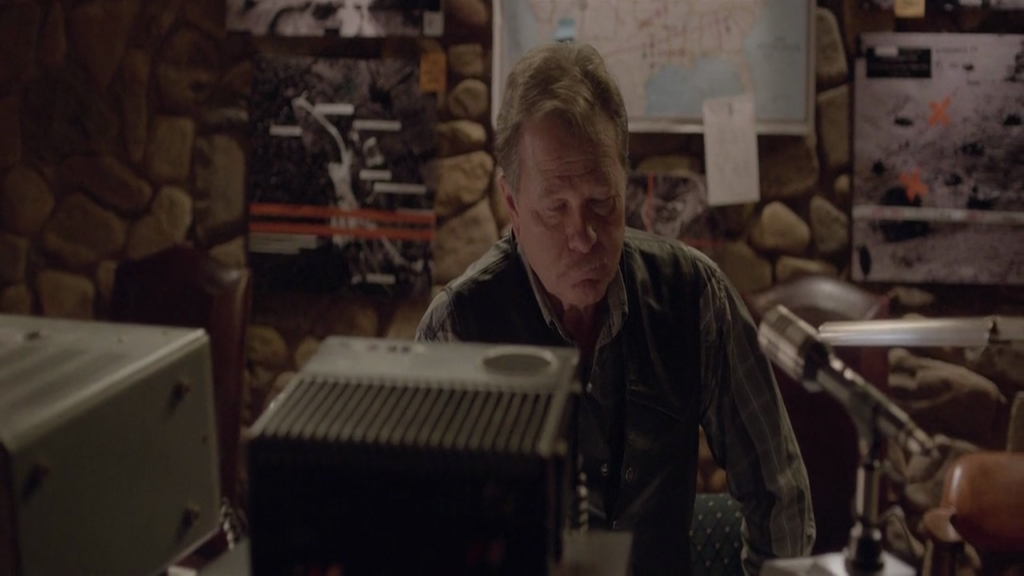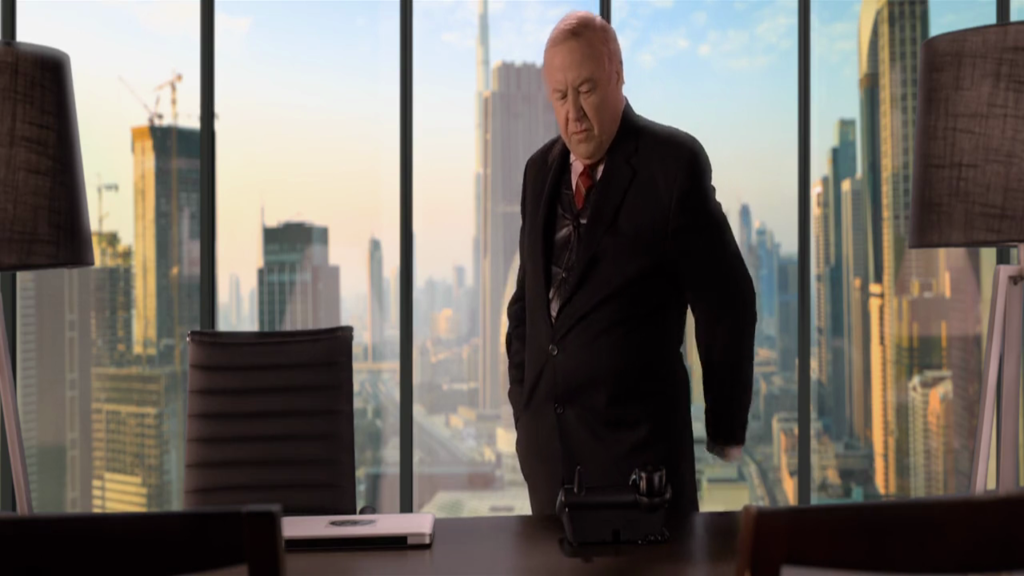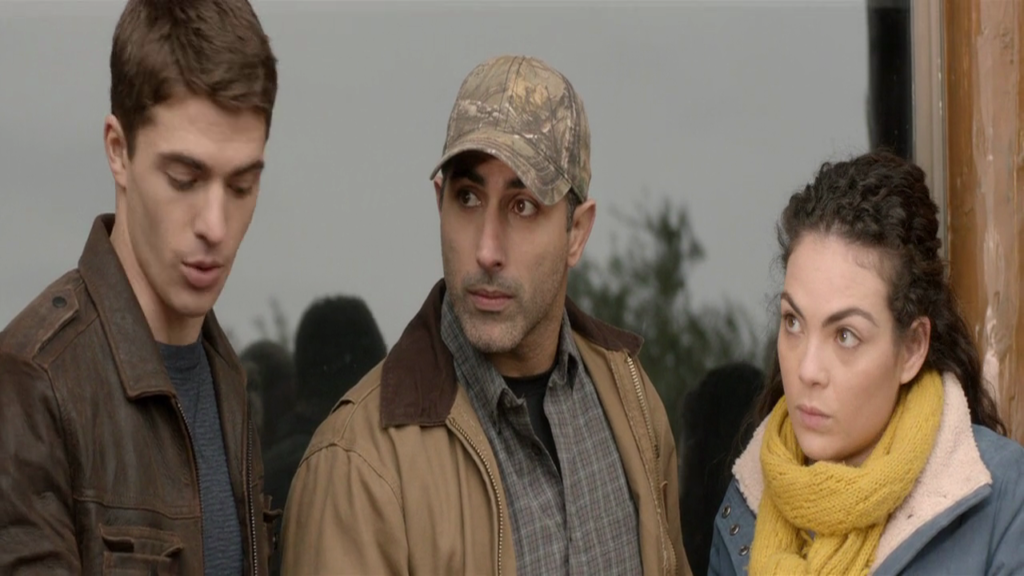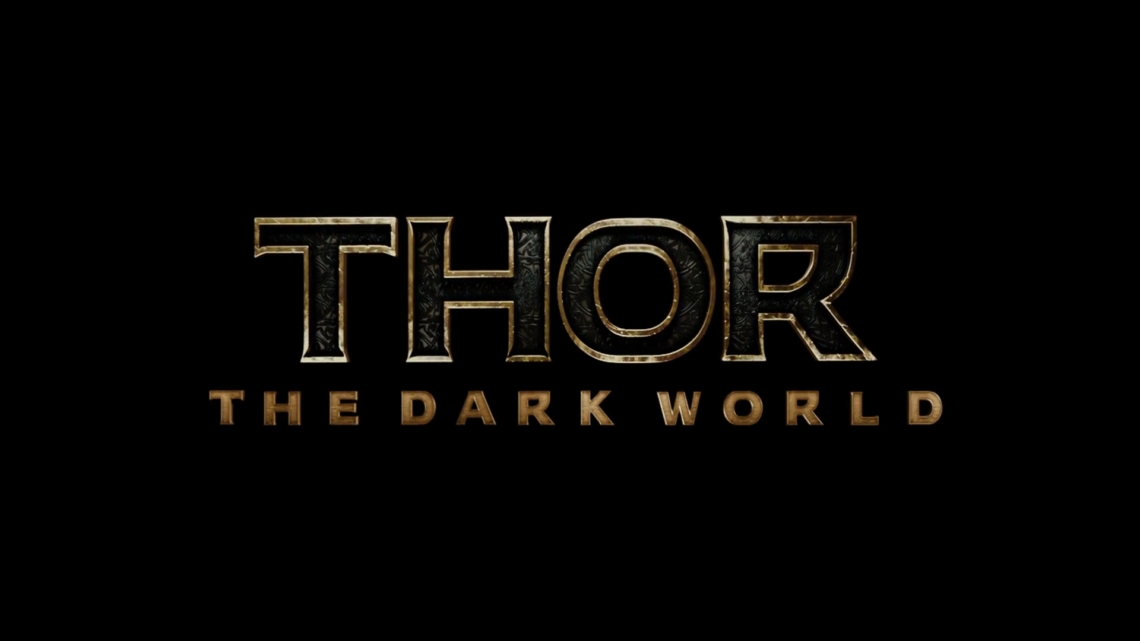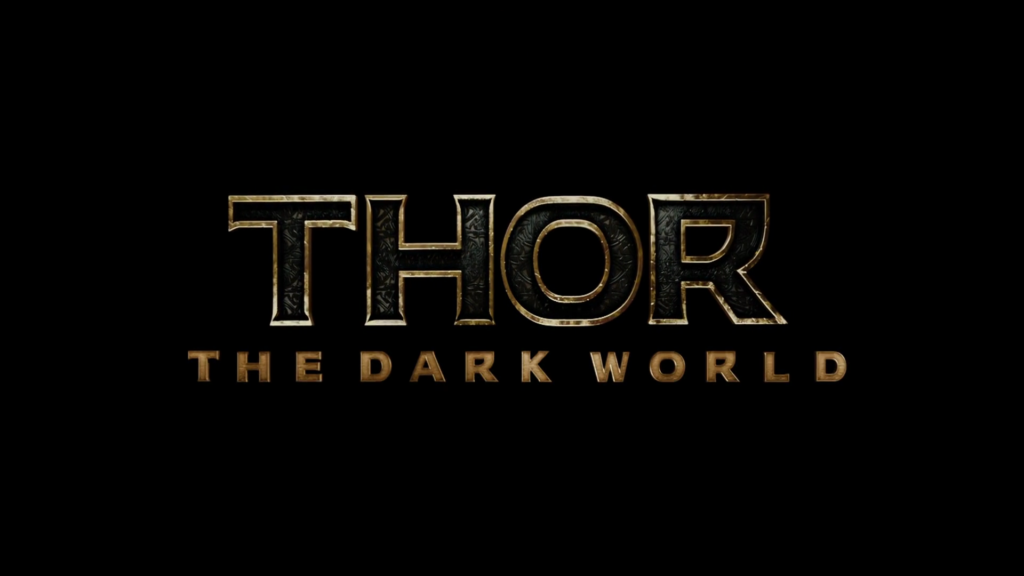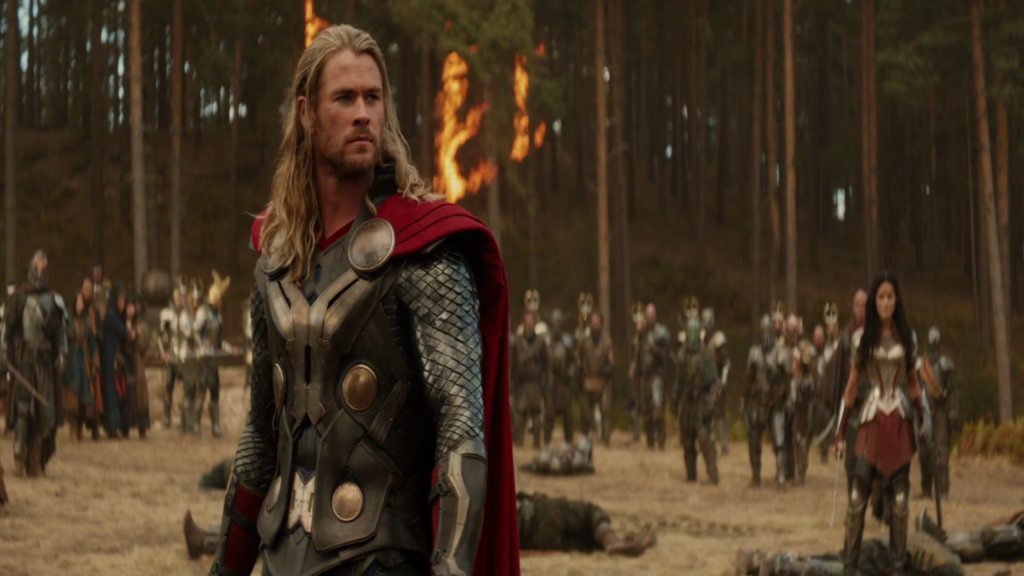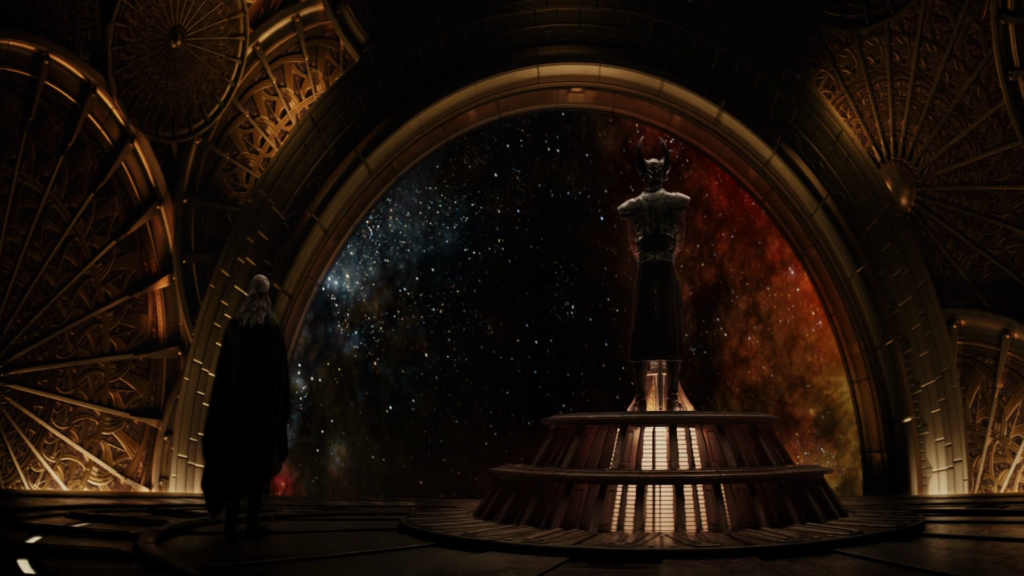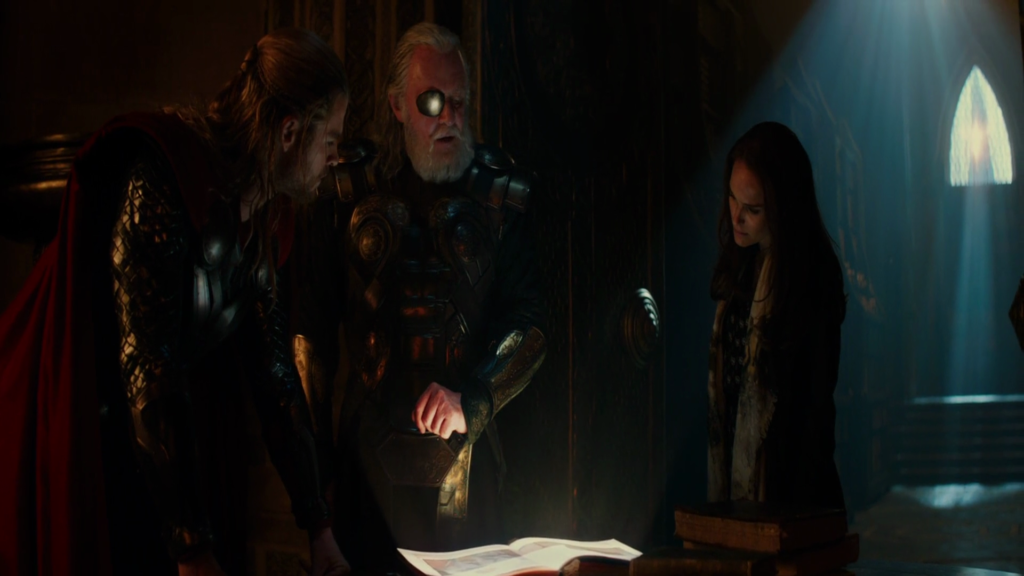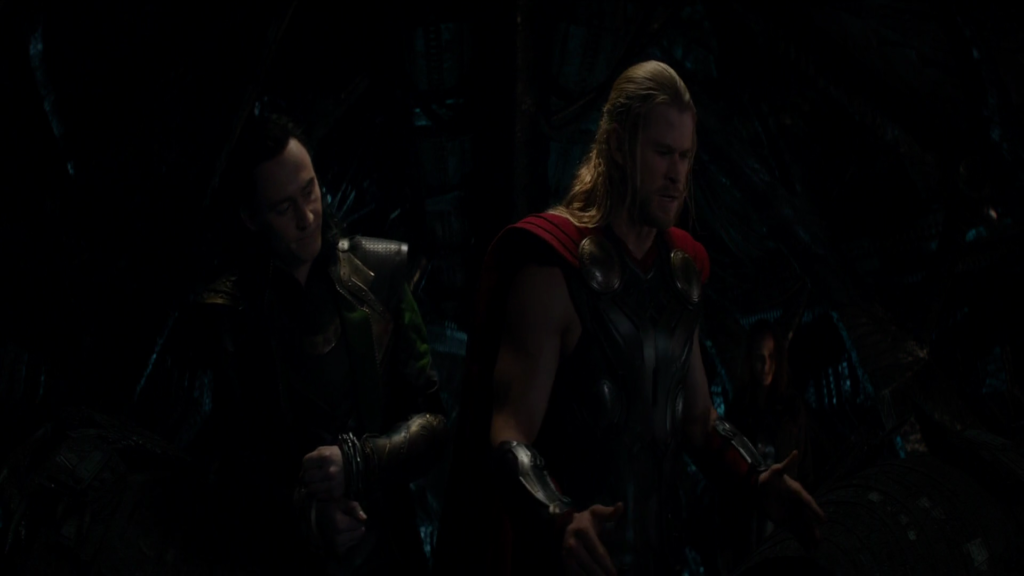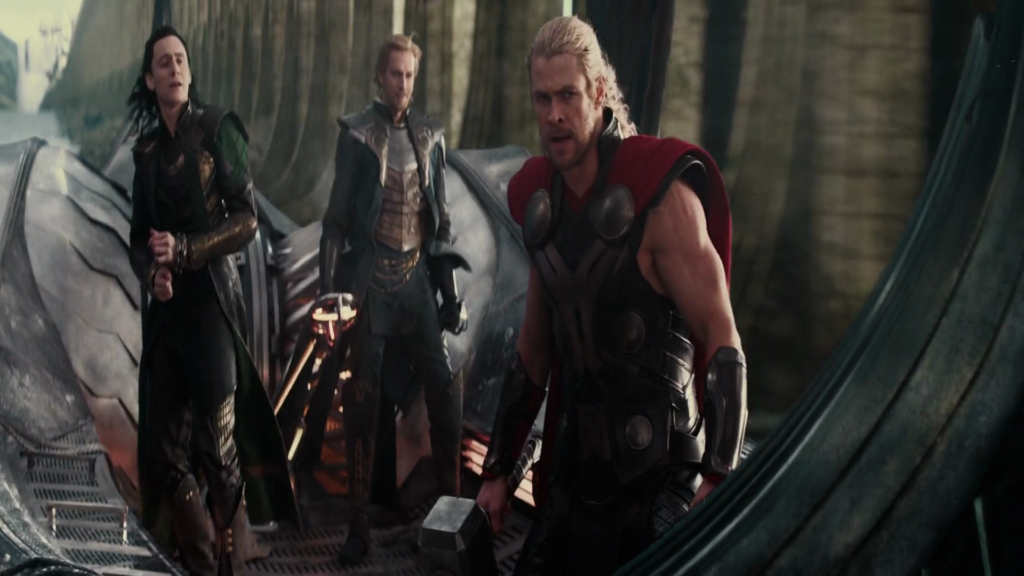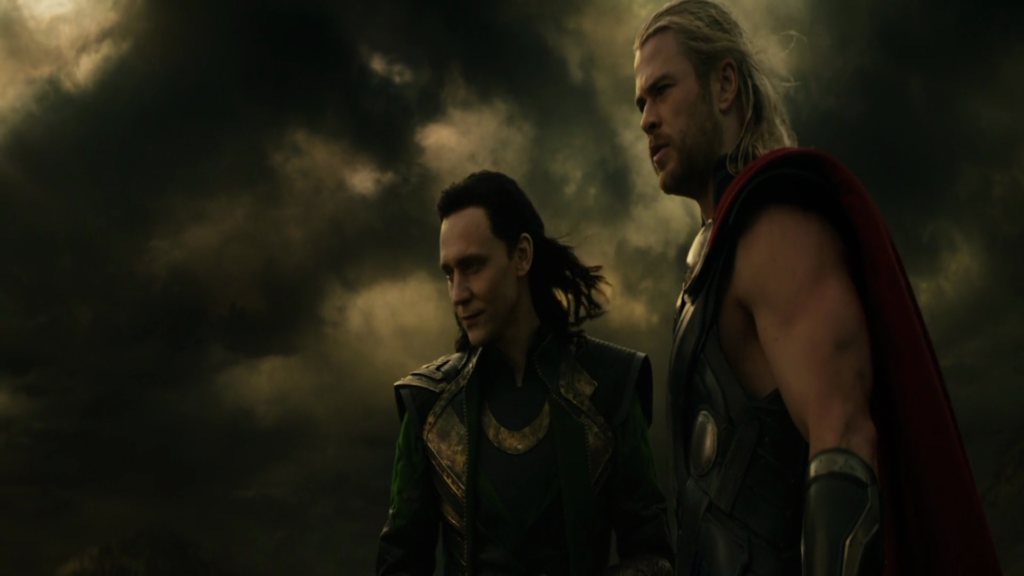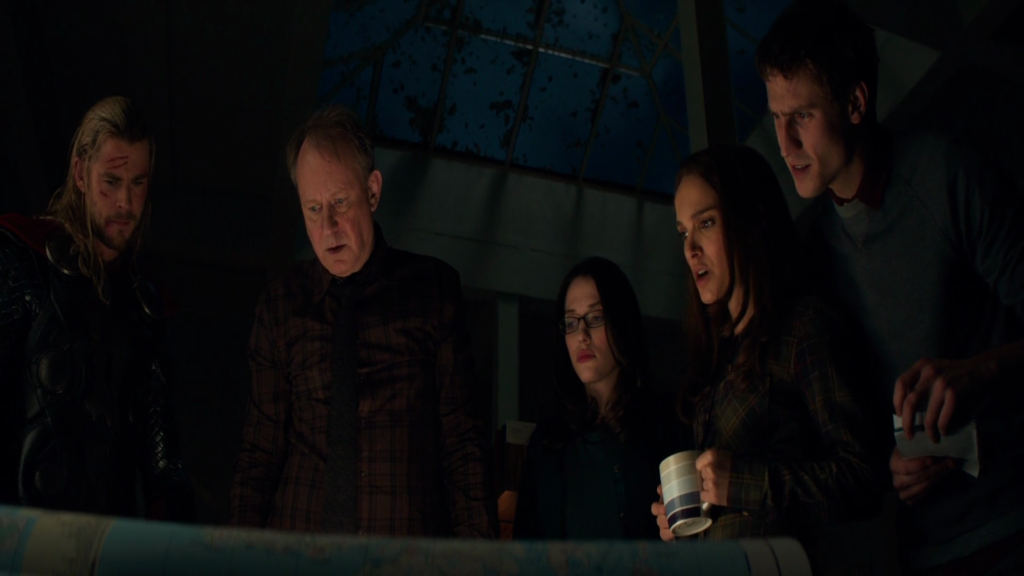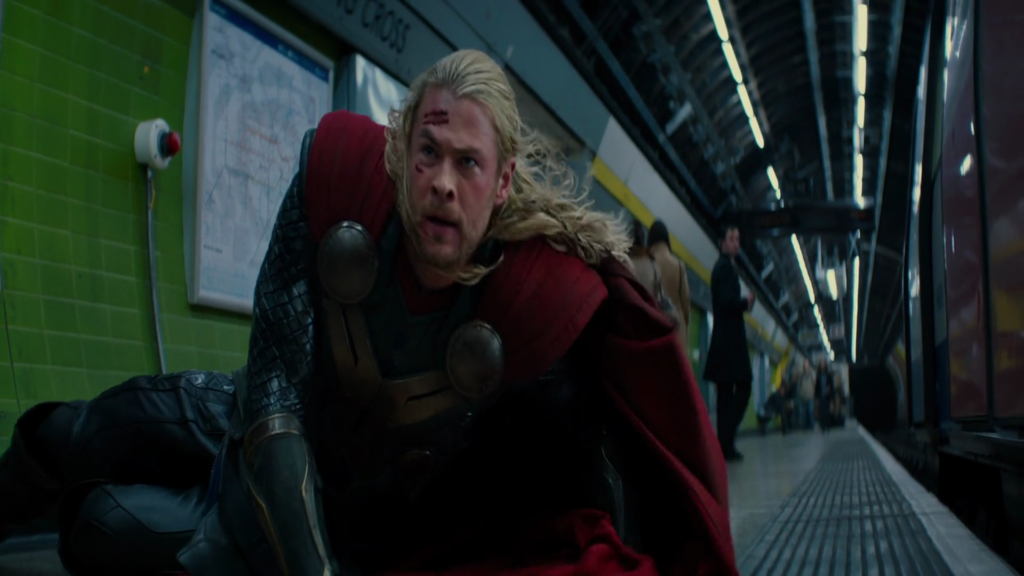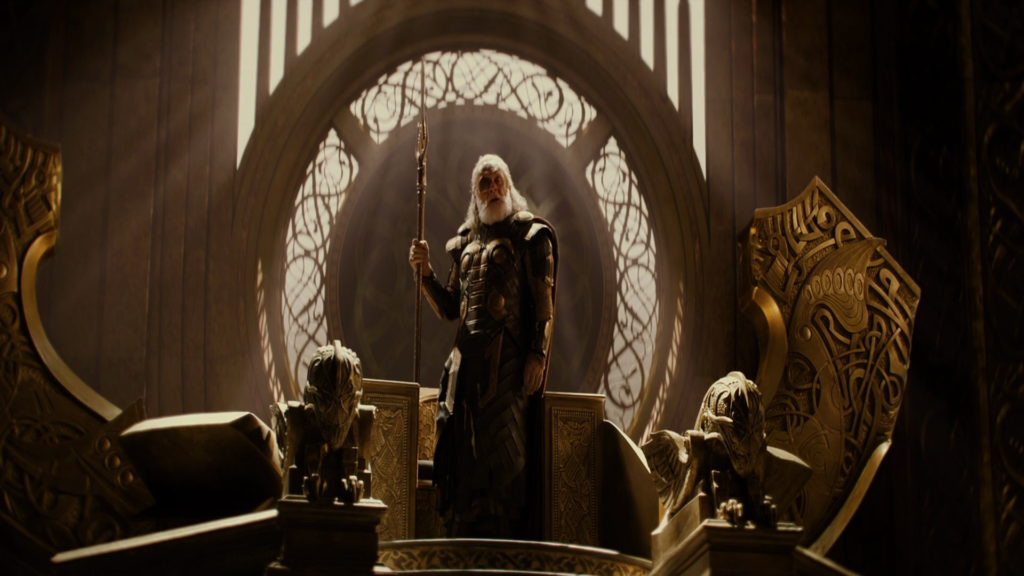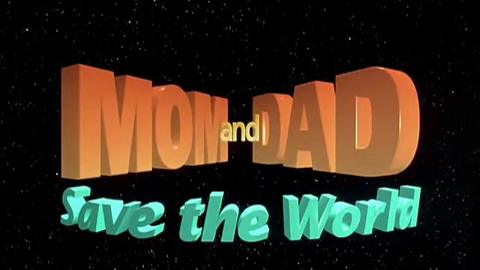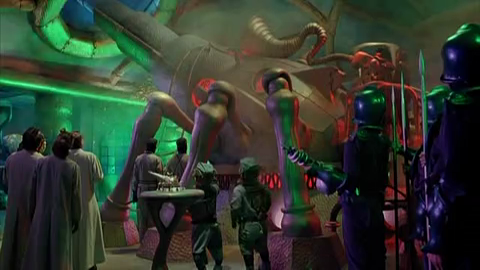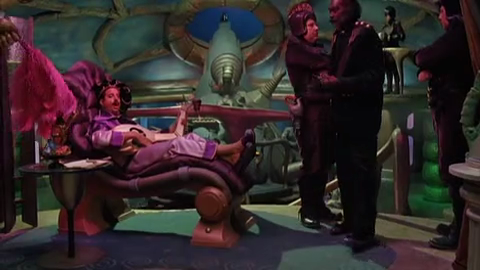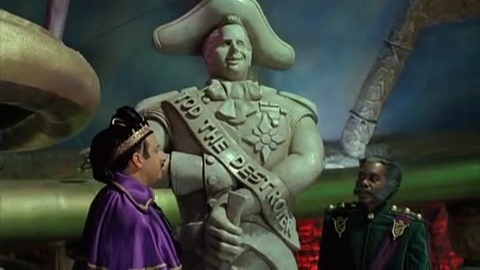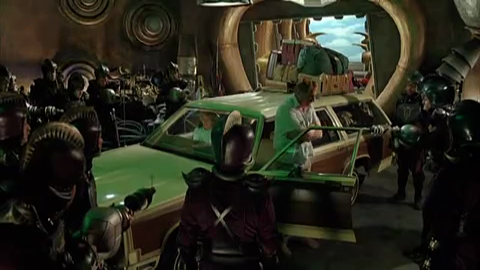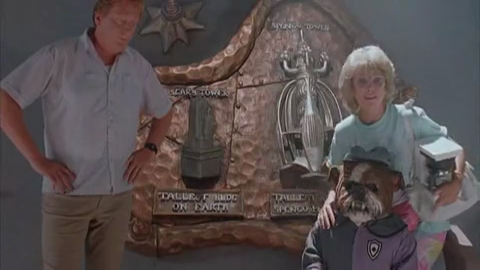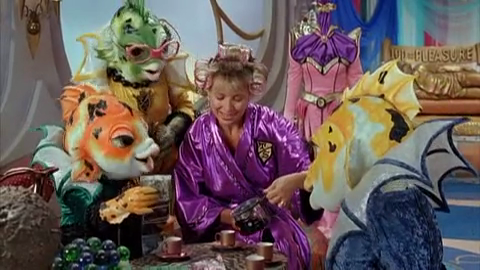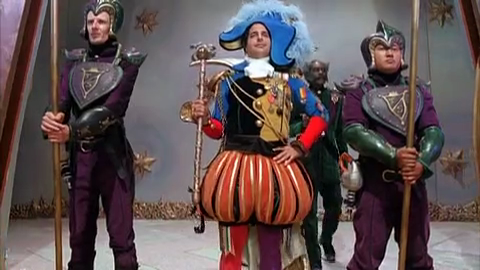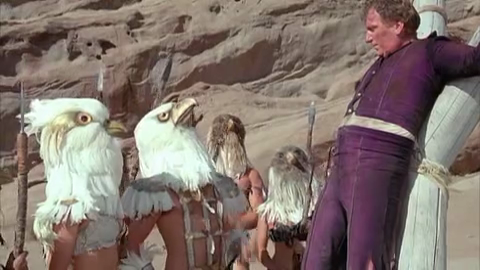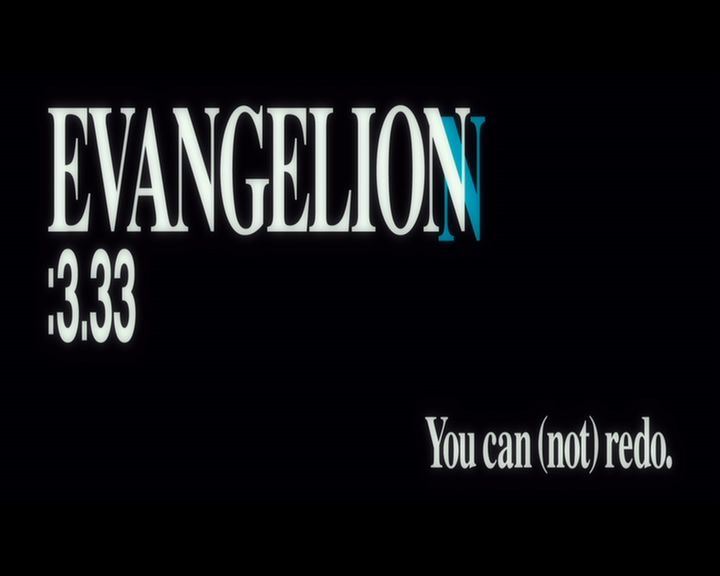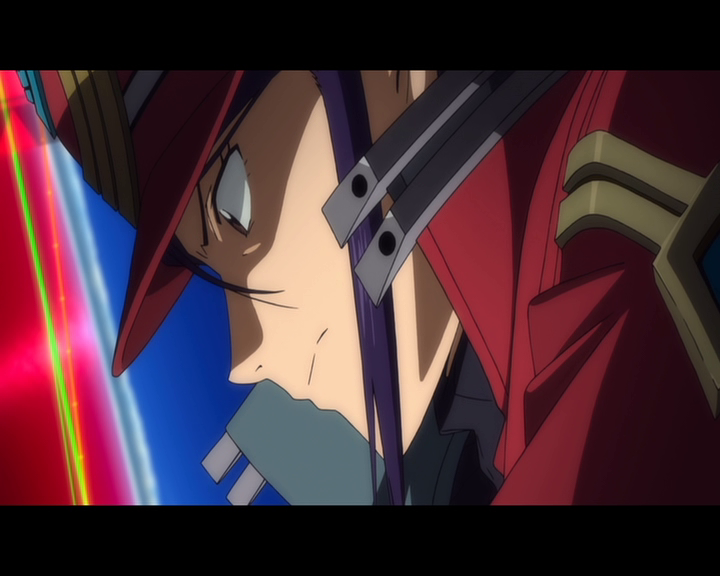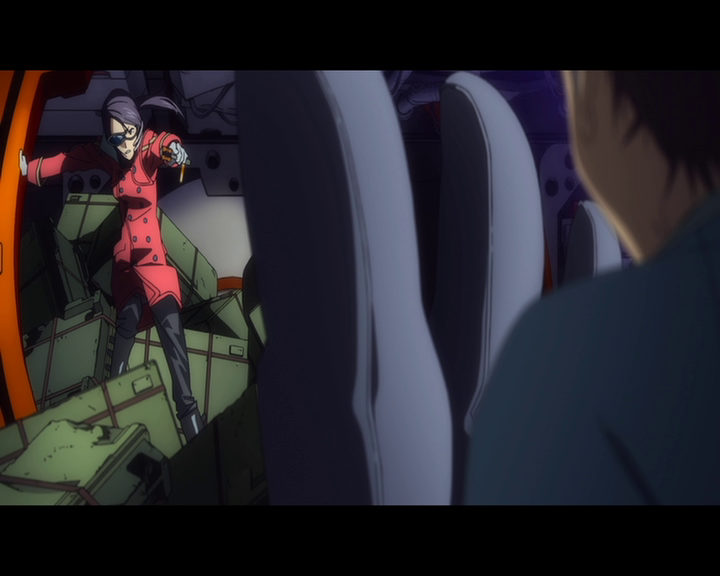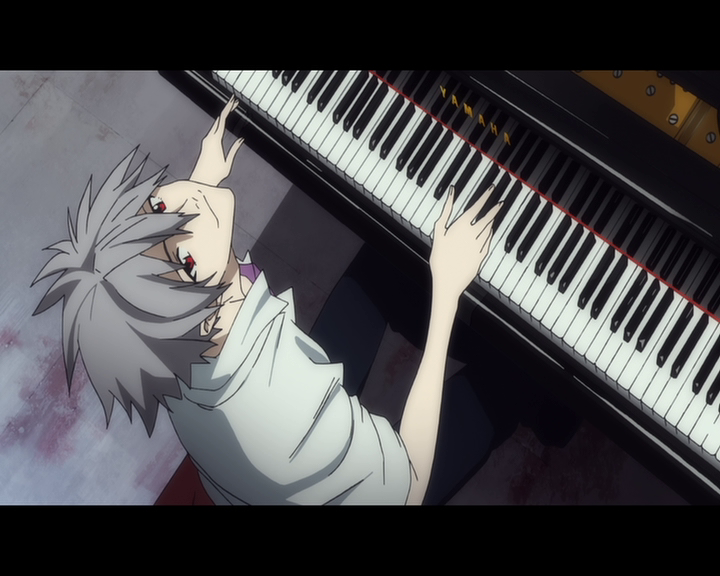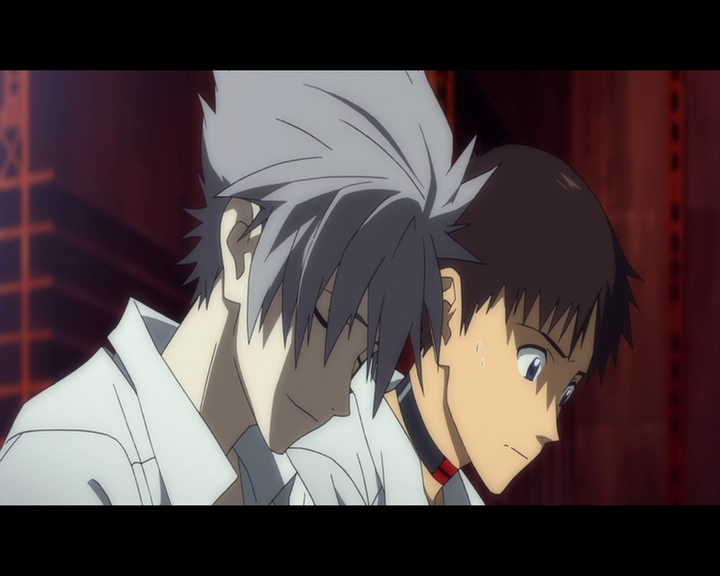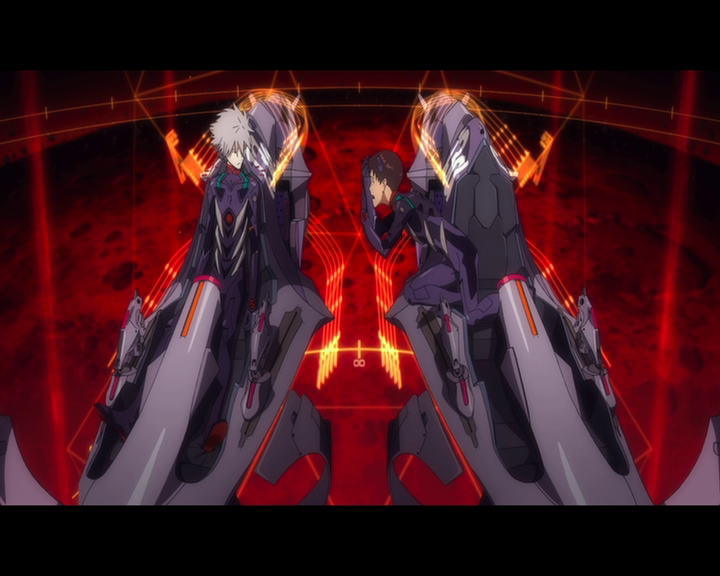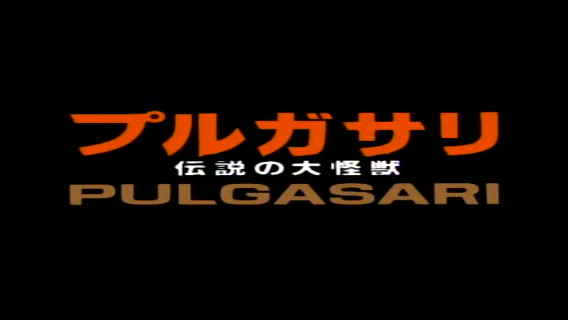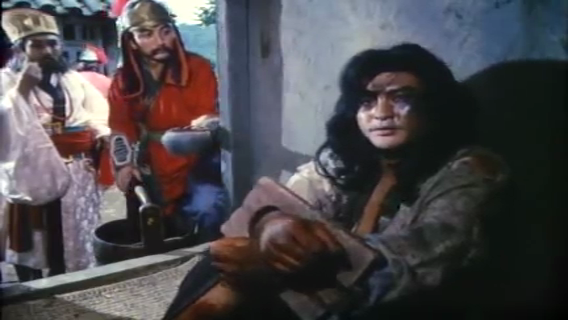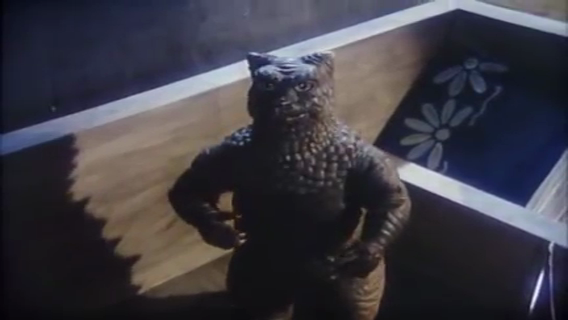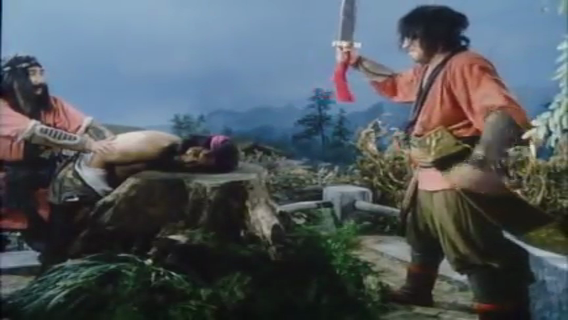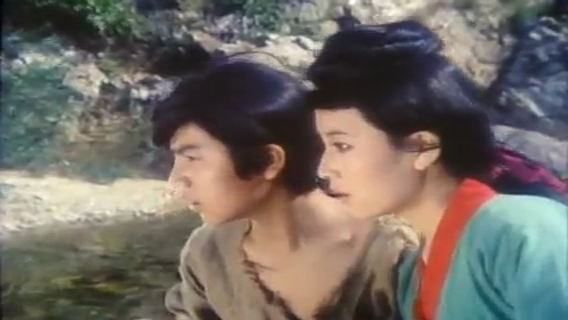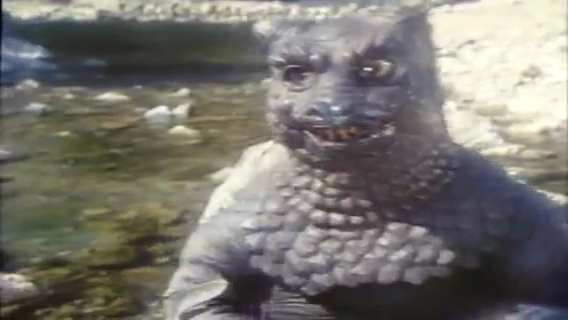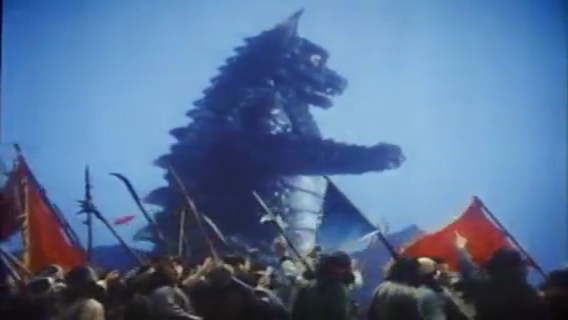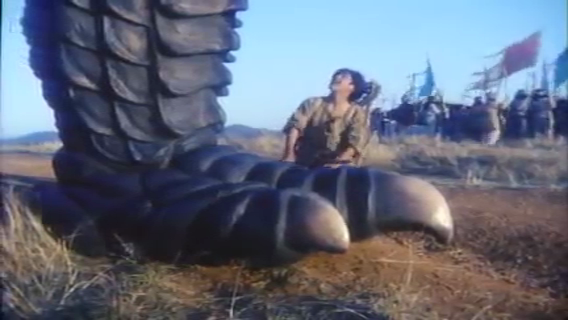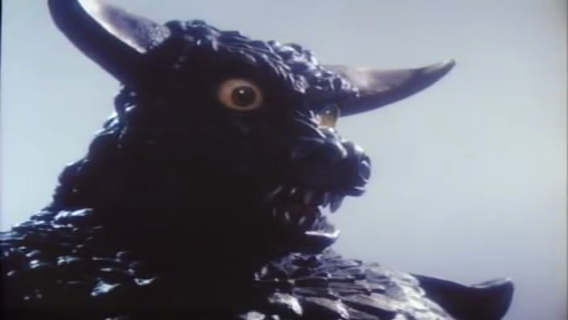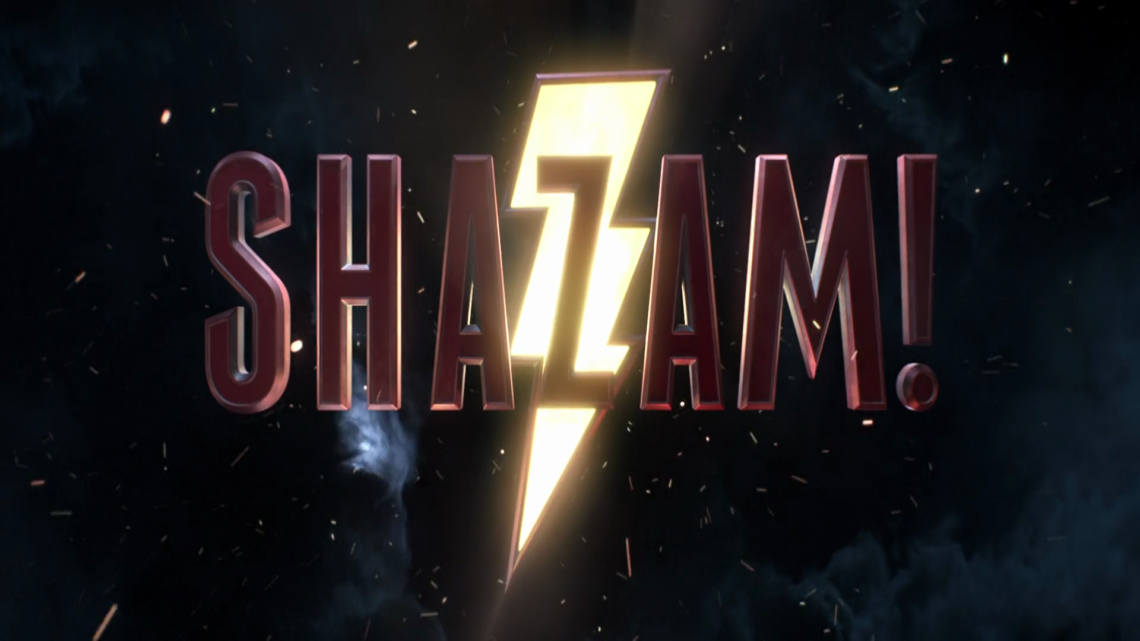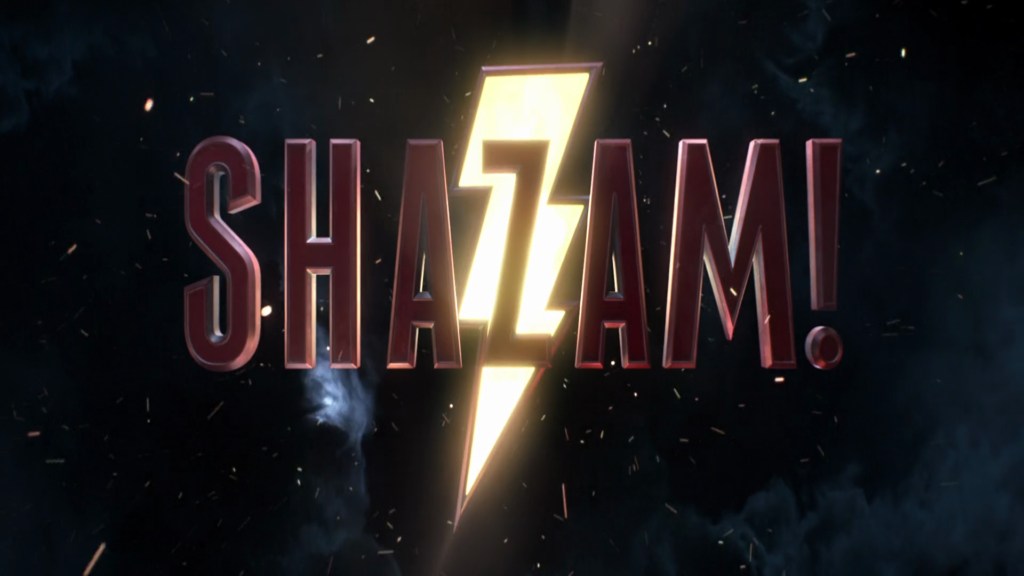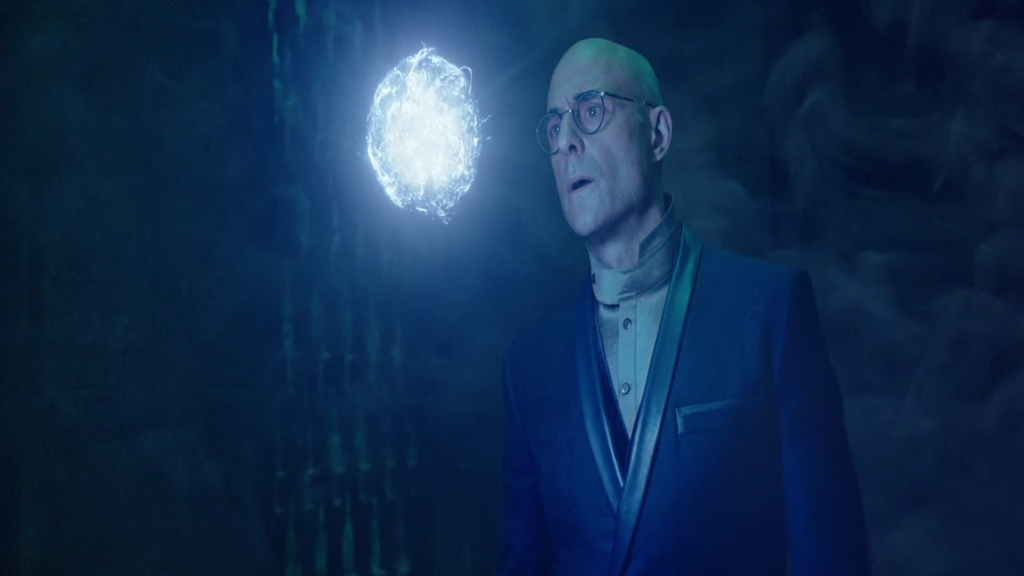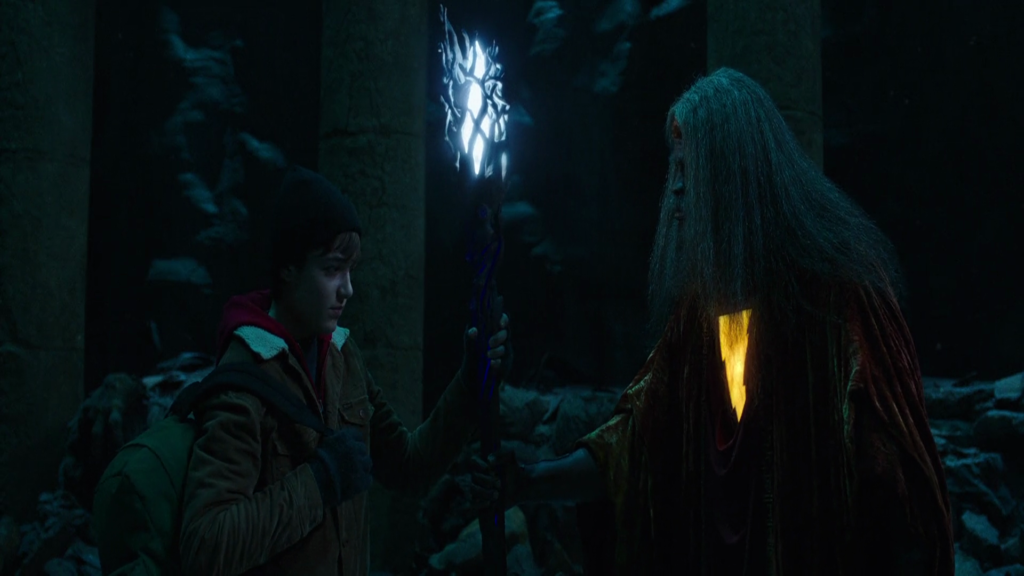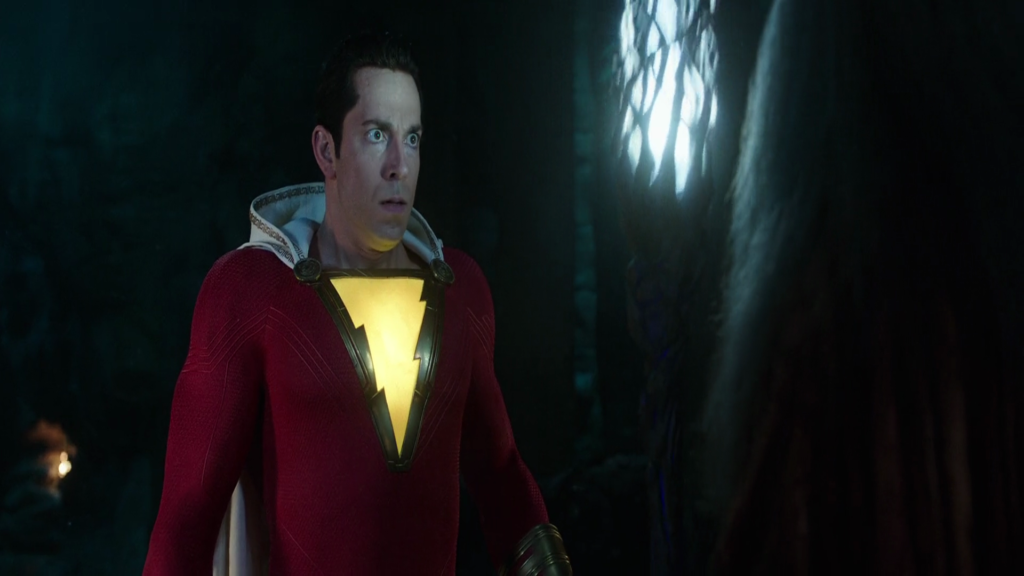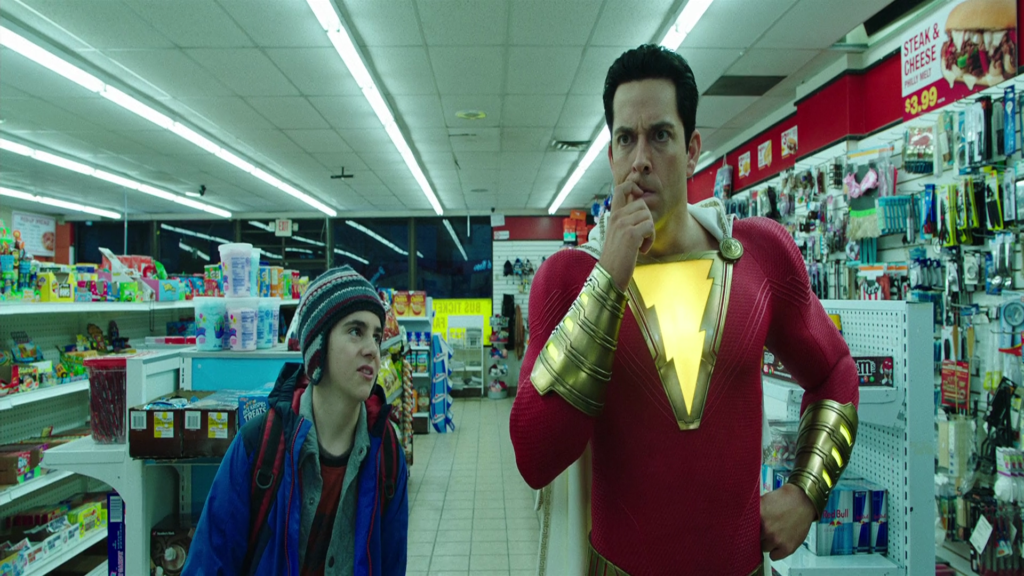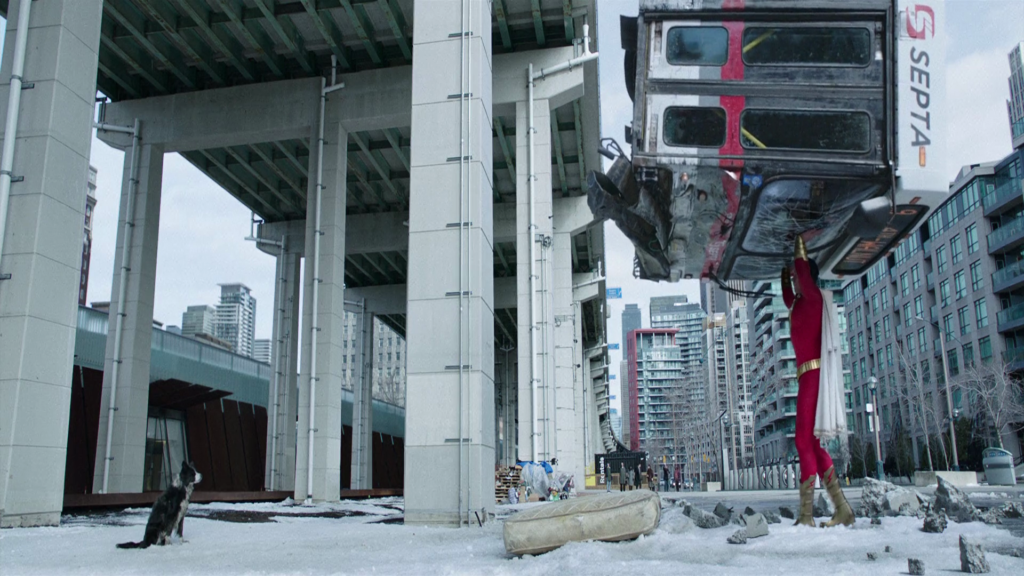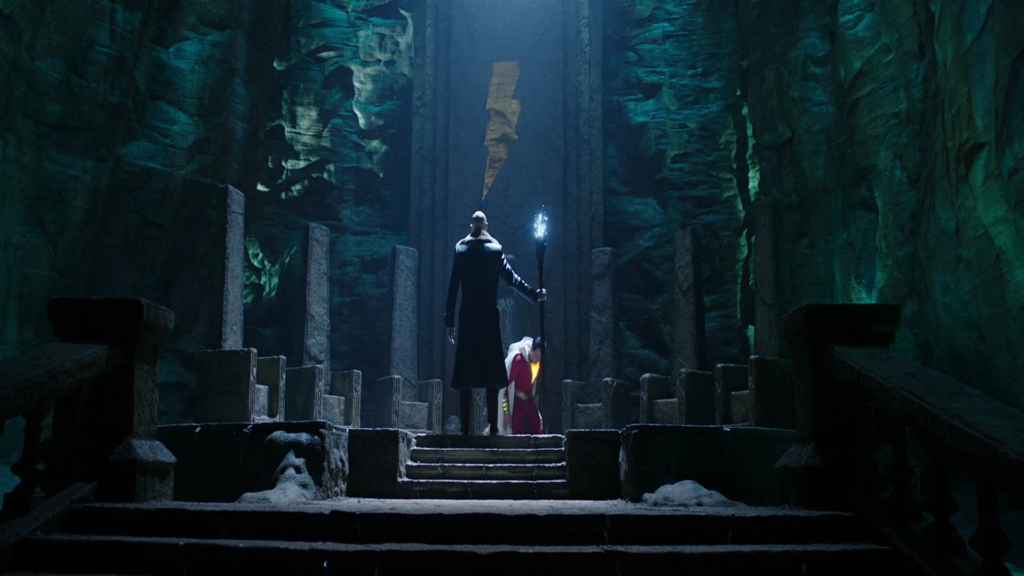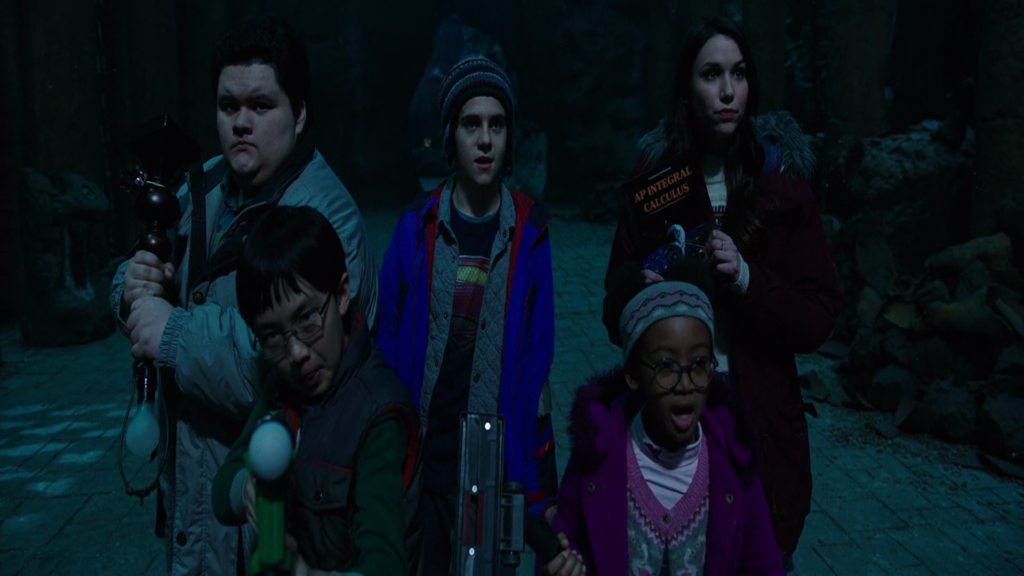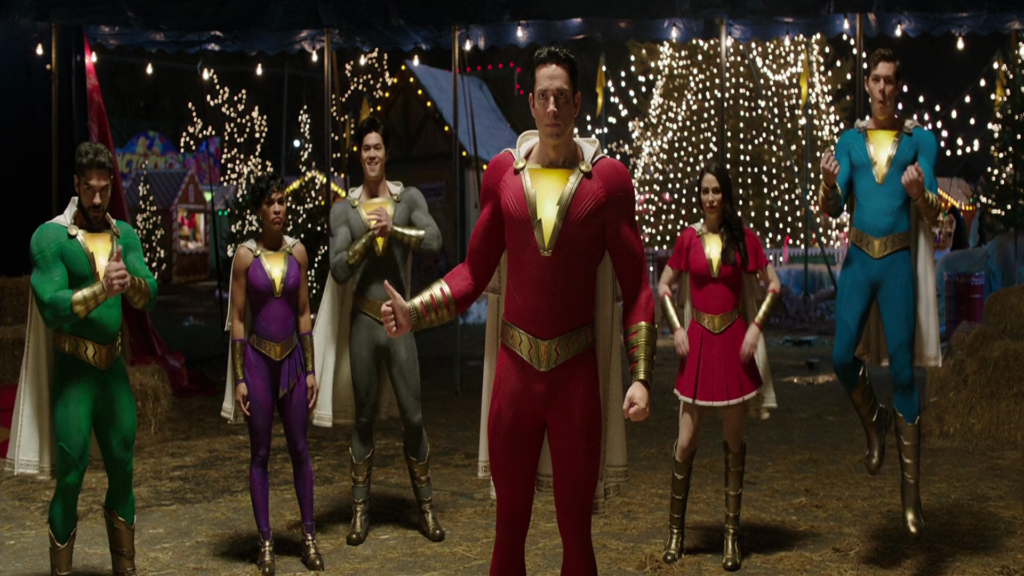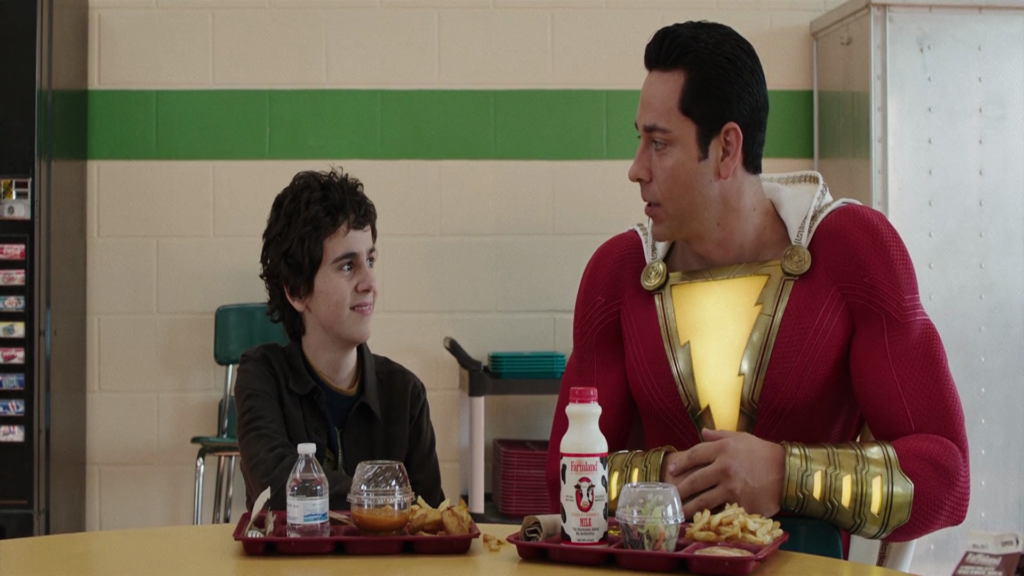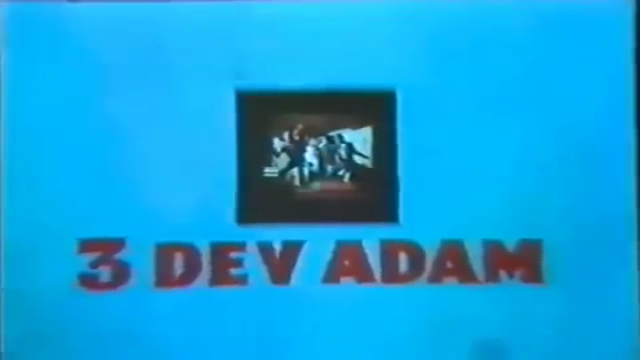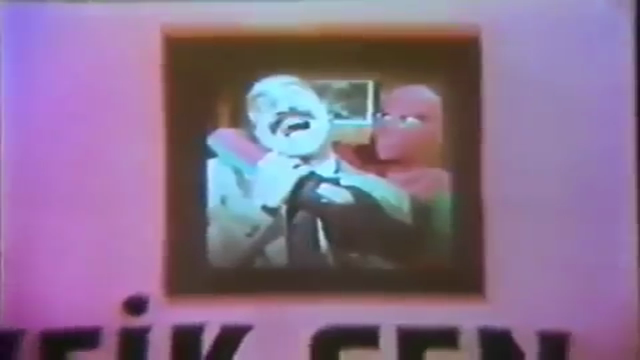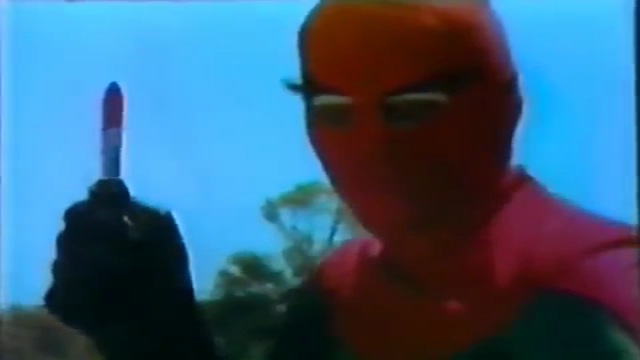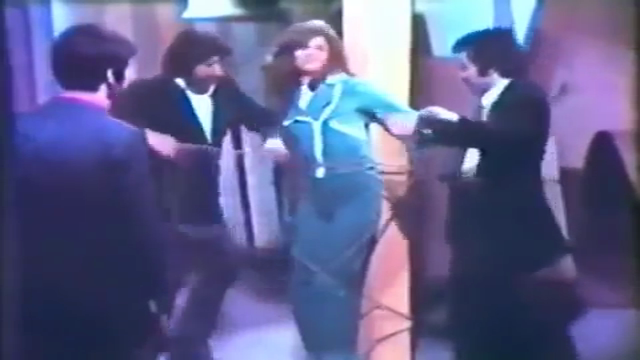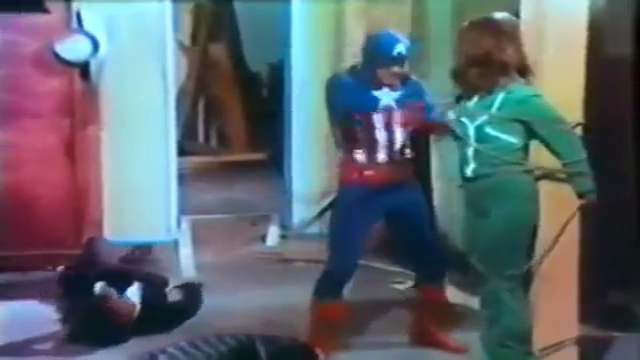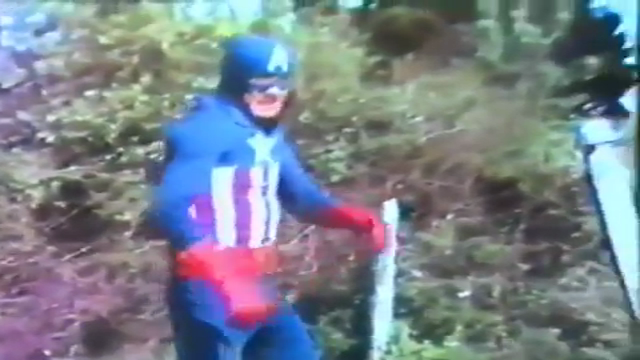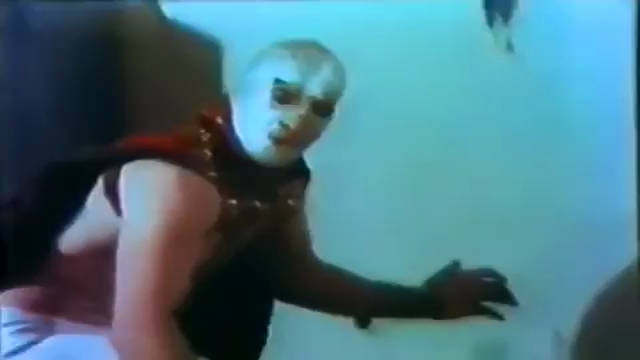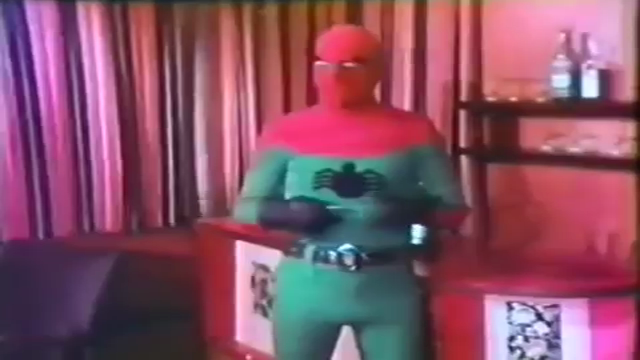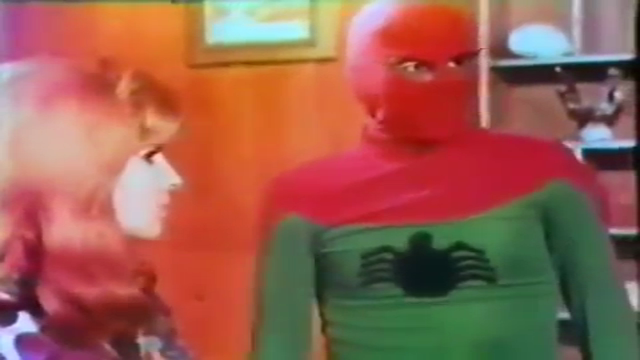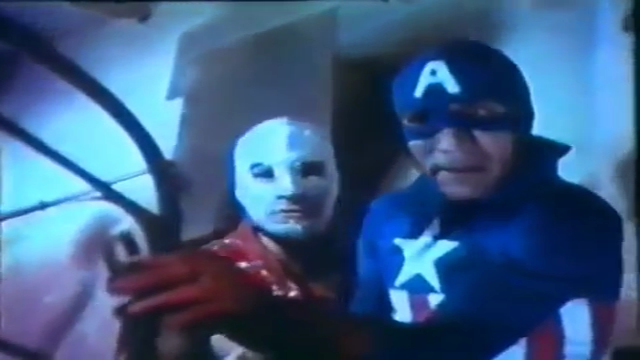-
#373 – Brick Bradford (1949)
Brick Bradford (1949)
Film review #373
Director: Spencer Gordon Bennet
SYNOPSIS: Brick Bradford and his friends are assigned to visit the lodge of the scientist Doctor Tymak, who has developed “interceptor ray” that can intercept and destroy enemy rockets. It’s potential to be developed into a death ray as well has attracted the attention of the foreign spy Laydron, who wants to steal the ray. Brick and his friends must fight to keep the ray from falling into the wrong hands, and help Tymak finish his research as they travel across time and space to defeat the villainous Laydron and his goons…
THOUGHTS/ANALYSIS: Brick Bradford is a 1949 movie serial based on the comic strips of the same name. The opening introduces Brick Bradford and his friends Sandy Sanderson (yes that is apparently his real name), Professor Salisbury and his daughter Jane. They are visited by a U.N. official to assigns them to aid the work of Doctor Tymak, a scientist working on a secret project who may be the target of foreign spies. The spy Laydron manages to get to Tymak first, and while Tymak flees, Laydron pretends to be him when Brick and his friends get there in order to capture them. The plot of the serial follows the standard serial setups, with a constant back-and-forth between the heroes and villains, fist fights, getting captured, escaping and daring cliffhangers. I suppose what makes the serial unique is that it is a mix of all the usual elements of the format thrown together into one. For example, the opening third deals with Tymak fleeing to the moon after Laydron trying to capture him and Brick going to rescue him. While there, they get caught up in a civil war between a dictator and the rebels who want to restore democracy. This part of the story is very similar (practically identical) to a Flash Gordon serial, and while it will offer no surprises to viewers familiar to said serial, it offers an interesting setting and some fun traps. The next part of the film involves Brick and Sandy going back in time to find a note buried in a treasure chest that has the formula necessary to complete the interceptor ray. They get caught up in a battle between some sailors and a native tribe and the whole setting again offers something different. The third act revolves around the more standard serial plots of kidnapping, fist fights and chases as Laydron tries to get a hold of the interceptor ray. Add to all this the car chase scenes, invisibility devices and convoluted death traps and you’ve got a full-house in movie serial bingo.
The problem with the story is that while it does have plenty of variety, its different parts feel inconsistent with each other. The first part set on the moon is very similar (identical) to a Flash Gordon serial, and is probably the best written part, with a host of identifiable characters and plenty of danger and traps. The second part set in the 18th century is a bit more light-hearted and silly. With Sandy often making plenty of humourous quips. After these adventures throughout space and time, the final part resorts to the typical back-and-forth between the heroes and villains as they chase each other across the few sets the serial has. This is the weakest part of the serial, as it is difficult to top the first two parts. One reason for this disparity is that each part is written by a different writer, and clearly they all have their own ideas of what should be going on in the serial. The director, Spencer Gordon Bennet, did a number of these film serials, but his expertise doesn’t really fix the problems (he also directed the Batman and Robin, serial and after Brick Bradford the Superman serials, which were much better).
The movie serial format is a very outdated format. It’s multiple episodes re-used the same few sets as they were typically constrained to a low budget and would have to stretch what they had as far as possible (yet would keep viewers coming back to the theatre every week to watch the next instalment). Brick Bradford manages to have a good enough variety of settings thanks to the varied story, and is also aided by the fact that there are plenty of outdoor scenes. Obviously the moon having a breathable atmosphere and people living on it is a bit far-fetched today, but would have been somewhat believable back when the serial was released. The “time top” that Brick and Sandy use to travel back through time in is probably one of the first depictions of a time machine on film too, and I can imagine that it sparked people’s imaginations when they saw it for the first time. The characters themselves are all a bit dry and without merit, and Brick doesn’t really stand out alongside the Flash Gordon’s and Buck Rogers’ of the movie world. Overall, Brick Bradford can best be summed up as a “greatest hits” of the sci-fi movie serial: it has everything it needs from death rays, aliens, time travel, invisibility devices, mobs, car chases, convoluted death traps, all-american heroes, and a single female character. However, all of these elements feel very disjointed from one another, and the mix of writers with different perspectives gives the serial an uneven tone. There is a decent amount of variety throughout the fifteen chapters, but by the end the film has exhausted everything the format has to offer and it clearly shows. A valid attempt with familiar concepts, but nowhere near the best that the serial format has to offer.
-
#372 – Tomorrow, When the War Began (2012)
Tomorrow, When the War Began (2012)
Film review #372
Director: Stuart Beattie
SYNOPSIS: Seven teenagers in rural Australia go off into the wilderness for a weekend camping trip, but when they return, they find that while they were away, a foreign army has invaded the country, and rounded up all of their families. The group are hunted by the occupying forces, and must not only find a way to survive, but to fight back and save their town…
THOUGHTS/ANALYSIS: Tomorrow When the War Began is a 2012 Australian film based on the novel of the same name. The film centres around a group of teenagers who have to survive when their country is invaded by a foreign power. In the beginning, we are introduced to Ellie, a normal teenager who narrates the story, and is organising a weekend camping trip with her friends into an area of the wilderness literally called Hell. While they are away with no way to contact anyone, a foreign army invades Australia and takes over their town, as well as imprisoning all their families. When Ellie and the rest of the group return home to find everyone gone, they have to find a way to first of all survive, then figure out how to fight back. The film is quite similar to Red Dawn, which really remains the benchmark for these types of films. The plot unfolds steadily and more or less predictably, but given the constant danger that the cast is in, it creates a tense atmosphere in which you can believe that no one is safe, and danger could just be around the corner. The film exclusively centres around the cast of teenagers, and for most of the film they are just trying to survive before they can actually start to fight back. We don’t see their families captured, and neither do they try and free them because they are too busy just trying to avoid getting captured themselves, which sort of makes sense. The film also has a ‘coming-of-age’ feel to it as the characters are forced to grow up and confront adulthood a lot sooner than they were expecting. There is a lot of suspense in many of the scenes throughout the film, and a constant sense of danger that is executed well, driving many of the decisions that the characters take.
The most interesting part of the film is definitely the characters. Each of the teenagers that make up the group has their own recognisable personality, and a good amount of focus is given to each of them to see how they deal with the situation they find themselves in. The inter-personal relationships between them also get a good amount of attention, and so while some of the characters fall into very stereotypical roles, they develop unique relationships and responses throughout the film, which makes keeps it interesting. Being based on a book, you can certainly see where the characters were specially developed in the text and translated into film well. Sometimes there’s a corny line of dialogue that feels out of place, and takes you out of the drama of a scene, but the overall impression of the characters you get isn’t hampered by this. They really are a balanced bunch with elements of romance and animosity to give it some variety, and plenty of opportunities by the end of the film to overcome their shortcomings and truly ‘come of age’ (even if, again, it sometimes feels a bit corny or obvious). Ellie certainly leaves a strong impression as she starts as an ordinary teenage girl and quickly becomes scarred and hardened by the trouble she goes through (such as having to kill the enemy soldiers), but also has to contend with her still human side. Kevin’s cowardice is a constant burden to the group, but by the end he finally finds something to stand up for. Homer’s unruliness finds a place in executing and planning guerrilla tactics, Fiona is a bit of a princess, but isn’t afraid to confront her humanity and help out despite being aware of her limitations, and Robyn realises that following her religion isn’t so simple when she also has her loyalties to her friends who are also counting on her. Again, these are interesting characters to watch that evolve beyond the familiar stereotypical roles they begin in through well written dialogue and relationships.
The balance between drama and action is well maintained, and the scenes are well constructed to serve their purpose. There’s some great shots of the Australian wilderness which really define the location well and give it a unique sense of identity (while the themes in the film are familiar, they are rarely set in this part of the world). The soundtrack is full of fitting songs, and the production and direction is well executed. The film never gets too over-the-top, and while not overly violent or gruesome, does not shy away from the harshness of what is going on, which again accentuates the need for these characters to grow up quickly and confront their weaknesses. The plot eventually centres around the group attempting to blow up the only bridge in and out of town, thereby cutting off reinforcements from the nearby port. The film ends with their success, but with the war far from over and their families still imprisoned, they obviously have a long way to go. There were several more books that continued the story, but none of them were adapted into a film, which is a shame because by the end of the film the cast becomes very familiar and you are certainly left wanting more from them. Tomorrow, When the War Began follows familiar themes and tropes, but branches out to develop it’s characters and unique location in an interesting and refreshing way, and keeps the viewer engaged with tense action scenes and emotional drama. There’s the odd line of dialogue or performance which falls flat and interrupts the investment in the film, but overall it’s an entertaining and captivating watch.
-
#371 – Pokémon: Detective Pikachu (2019)
Pokémon: Detective Pikachu (2019)
Film review #371
Director: Rob Letterman
SYNOPSIS: When Tim Goodman gets news that his Father has been killed in a car crash, he travels to Ryme City where he worked as a police detective, to collect his things. While there, he finds a Pikachu who for some reason he is able to understand. Tim also learns that this Pikachu was his Father’s pokémon partner, and he has had his memory wiped. Tim decides to team up with Pikachu to help him regain his memories and carry on the case that he and his Dad were working on before he seemingly died…
THOUGHTS/ANALYSIS: Pokémon: Detective Pikachu is a 2019 film based on the successful video game franchise, and loosely follows the 2016 game Detective Pikachu. The film starts off introducing Tim Goodman, a 21-year old insurance salesman who gets news that his father has died in a car crash in Ryme City. Tim heads to the city to collect his father’s things, but while in his apartment finds a Pikachu that Tim can understand when he speaks. Not only this, this Pikachu was his father’s pokémon partner in his job as a police detective, and has lost all his memories, so Tim gets caught up in this curious mystery that he teams up with Pikachu with, to try and work out what happened to his father, and what happened to Pikachu’s memories. The plot of the film is focused on unravelling this big mystery, which impacts on each of the characters, but becomes tied into the fate of the city as a whole too, meaning it has lots of facets and interesting avenues to head down. Nevertheless, the story is fairly simple to follow, while also offering some decent twists along the way. The different elements of the plot perhaps don’t weave together enough though, as scene-by-scene it focuses on either story, action or emotional aspects, and they don’t overlap too much. With this in mind the villain’s big plan can feel a little muddled, especially in comparison to the much more interesting mystery concerning Pikachu and Tim’s father.
It should be noted that you don’t really need to have an extensive knowledge of Pokémon to enjoy this film: it is easy enough to follow the mystery without knowing what all the pokémon are. Nevertheless, the film is clearly aimed at fans of the franchise, and there’s a ton of little references that will satisfy the hardcore fans, and they will be the ones who get the most out of this film. Every pokémon has their own personality and comes alive on the screen, and while the human characters sometimes do not possess that amount of presence, they have their own specific roles that they play out well. Overall the film is easy to follow, and offers plenty of entertainment tailored to the pokémon themselves.
One of the most noted aspects of the film are the pokémon visuals: they have a unique aesthetic that maintains the original designs, while also making them more ‘believeable’ in the real world, such as accentuating the fur on Pikachu and others. Altering and adapting character designs is always a challenging task to pull off, as any alteration will no doubt anger fans and purists. However, Detective Pikachu seems to have struck the perfect balance with it’s designs: it makes the pokémon more ‘real’ looking, while also keeping the proportions and feel of the original designs, which went over well with the significant majority of fans. Sometimes the CG lets itself down (particularly with regards to Mewtwo), but on the whole it is pretty solid. The pokémon are also full of character, and their facial expressions (especially Pikachu’s) really bring them to life. Ryme City itself has its own unique aesthetic as a mix of London, New York and Tokyo, while also bringing in its own original elements to give it a feel of something new and also as a distinct place in the pokémon universe. Overall, Pokémon: Detective Pikachu is a success in translating the franchise into a live-action setting for the first time: it offers something new without deviating so much that it is unrecognisable to fans. The story is easy to follow, and the characters are entertaining, and the negatives don’t detract too much from the overall enjoyment. I think the film really is intended both for die-hard fans and (equally) also for those who were only into the franchise when they were a kid many years ago, and will appreciate the nostalgia trip. Even with all the new pokémon they would have never seen before, there’s still plenty of classic pokémon they will recognise and enjoy seeing again.
-
#370 – Amerigeddon (2016)
Amerigeddon (2016)
Film review #370
Director: Mike Norris
SYNOPSIS: In the near future, where the president of the United States has signed over much of the country’s power to the United Nations, the governing body secretly launches an E.M.P. at the country to disable all electronics and use the attack as an excuse to declare martial law and to confiscate everyone’s guns. A group of people band together and decide to fight against the ‘tyranny’ of the United Nations occupying forces, and defend their second amendment rights.
THOUGHTS/ANALYSIS: Amerigeddon is a 2016 film and clearly meant to be a ‘warning’ about the dangers of Americans having their guns taken away n order for them to protect themselves against an overreaching government. The film starts off with a dire warning about the the dangers of an all powerful government, which will possess the ability to remove it’s citizen’s rights and sign them away to the “new world order”. This phrase is the typical boogeyman of the right-wing for which this film was obviously intended for to fulfil their fantasies of fighting back against their government, and it is constantly throwing the phrase out to try and make it sound as evil as possible. Using some out of context clips of politicians using this phrase (including the right wing’s other boogeyman, Barack Obama) to again create this all encompassing enemy of the people. Let’s be completely clear why this film was made: to scaremonger people about the possibility of the evil government coming to steal their guns (not that it is going to convince anyone other than those who hold those beliefs), and to fulfil the fantasies of those who think that they will one day be American heroes by using their guns to fight the oppressive regime of the new world order, or something equally implausible.
The story is set in the near-future, where the government and successive presidents have signed over most of their powers to the United Nations, who also see American citizens with guns as domestic terrorists. An E.M.P. is launched at the country and knocks out all of the power, giving the government an excuse to declare martial law and confiscate all of the citizen’s guns. Society descends into chaos as the characters find their way to each other to form some sort of resistance. It is quite apparent that this whole plot makes no sense…basically because the whole fantasy of rising up against the tyrannical new world order also makes no sense. Firstly, characterising the U.N. as an evil organisation intent on world domination is ridiculous and has no basis in reality. Secondly, what possible benefit would there be to destroying all the electronic devices in the U.S.? Given that a lot of global companies and assets are there, it doesn’t make any sense to wipe them all out. Thirdly, why would the new world order, if it really had control over all the governments in the world, feel so threatened by a bunch of ill-trained civilians in the middle of nowhere they would need to send in their army to wipe them out? Fourthly, the story is a direct copy of the film Red Dawn, while also managing to strip out anything interesting. Trying to understand the plot of this film is like trying to decipher the conspiracy theories that fuel it: it’s not possible, because they don’t make sense in the first place. They are hypothetical scenarios (fantasies) used to justify owning weapons and funding the organisations which relies on the fantasies peddled by this film.
The characters are themselves a bland cast of politicians, soldiers, and families who you would typically associate with the idea in this film: “real Americans” like people who own ranches in the middle of nowhere. The cast is not in any way diverse, and any elements that pretend to diversify or offer alternate view points are acts of tokenism, or just turn out to be the wrong path, such as Penny’s going to a ‘liberal arts college’, only to come back home to the safety of her gun-wielding family fighting against the world’s most powerful army (seriously…). The acting is all pretty bland and stale, and there’s no originality or interesting aspects to them. This is probably intentional so that viewers can fantasise about themselves being in such a position instead, allowing them to project their fantasies into the ‘story’ with ease.
The production and special effects throughout are pretty bad. The finale is by far the worst part though, as the U.N. apparently sends a whole squad of personnel to the ranch, which consists of a few men, three vehicles and a helicopter. Again, if the world’s most powerful organisation really wanted these citizens, they would certainly overwhelm them with much more force, so again it holds no basis in reality. Also, the U.N. soldiers mostly wear blue caps with a crude U.N. logo stuck to them, and quite frankly it is ridiculous how non-threatening they look. The final fight consists of the U.N. helicopter, which clearly is just a normal civilian helicopter, against the citizen’s gyro-copter, which again in reality would stand so little chance it is hilarious. The film ends with the proclamation that they have “won the battle, but not the war…”, ominously setting up some sort of sequel, but thankfully one can hope that none shall emerge: this film is bad, in almost every aspect. I have used the term ‘fantasy’ a lot through this review, and that’s precisely what it is: a fantasy for those who think that they are patriotic heroes by amassing firearms to fight back against an oppressive government. It is a fantasy that holds no basis or credibility in reality. I would label this film as dangerous propaganda if it wasn’t so bad and unbelievably inept at getting its point across. No one is going to be convinced by the arguments in this film if you weren’t before, and for those that were it is just another hollow fantasy to indulge themselves and their bankrupt ideologies in. Terrible film about terrible ideas that can’t convey any reasonable arguments or facts.
-
#369 – Thor: The Dark World (2013)
Thor: The Dark World (2013)
Film review #369
Director: Alan Taylor
Thor: The Dark World (2013)
Film review #369
SYNOPSIS: A rare cosmological event is taking place in which the nine worlds will converge, creating disturbances across all of them as the barriers between them weaken. When Malekith, the ruler of the Dark Elves awakens, he sets about attempting to retrieve the Aether, a weapon of mass destruction he can use to return all of the world into darkness. Thor once again must protect Asgard and all other worlds as the Aether is absorbed into Dr. Jane Foster, a scientist and Thor’s love interest as Malekith attempts to retrieve the Aether by any means necessary…
THOUGHTS/ANALYSIS: Thor: The Dark World is a 2013 superhero film and the sequel to 2011′s Thor. It is part of the marvel cinematic universe. The film starts off telling the story of the dark elves and their leader Malekith, who many years ago tried to plunge the nine worlds into eternal darkness using a weapon known as the Aether. They were defeated by the Asgardians and forced into a state of suspended animation. In the present day, Thor is busy bringing peace to the nine worlds while a cosmological alignment of the worlds is beginning to take place, which is creating anomalies among them. Dr. Jane Foster on Earth is investigating some gravity distortions when she enters another dimension and absorbs the Aether into her body. her love interest, Thor, shows up and takes her to Asgard to treat the illness brought about by the Aether and to investigate it’s true purpose. Meanwhile, Malekith and his army have revived and plan an all out attack on Asgard in order to seize the Aether and again attempt to plunge the worlds into darkness. The plot of the film is varied, with a decent amount of action, drama and humour, but the main problem is that it just doesn’t fit together very well: the individual scenes themselves are decent, but the whole “cosmic alignment” and “plunging the world into darkness” elements are tropes that have been done to death, and offer very little surprise or interest to tie everything together. This is furthered by the moving around between Earth and Asgard that constantly shifts the focus of the film, and makes the different scenes have little relevance from one to the next. There is some effort made to give the characters a stake in the story, but again it seems to get diluted in the myriad of things that are going on, and the non-descript villain plot that is fairly standard.
The film’s strongest points are in it’s character interactions, particularly in the relationship between Thor and Loki. Following the events of The Avengers, Loki is imprisoned for life on Asgard for trying to take over Earth, with only his Mother coming to occasionally visit him. When Thor and Loki’s mother is killed By Malekith, The two brothers forge an uneasy alliance in order to get their revenge. Loki’s constant trickery and Thor’s righteousness really work well together, both as drama, and also from a humour perspective, giving them an ample amount of bickering that is fun to watch. Unfortunately, there isn’t enough of it. The whole romance between Dr. Foster and Thor doesn’t really develop from where it starts, and again is overshadowed by the Thor/Loki dynamic. Other characters play their part, but contribute very little, again because the scenes are so disparate they often fail to make an impact on the whole. An example would be the death of Thor/Loki’s mother, which isn’t mentioned at all after the funeral, and just gets forgotten.
For all these shortcomings, there are some positive points. Asgard looks great, and the action is fairly solid with a few surprises. The humour again serves as some light relief from the drama, and there’s a decent mix of all these elements. Unfortunately the plot as a w hole is fairly weak, and manages to make all the events in the film – even if they are about the end of the world – seem pretty inconsequential. Add to that the plot relying on a serious amount of coincidences that make less sense the more you think about them, and it is easy to see why people consider this film the weakest in the Marvel Cinematic Universe. It’s not completely terrible, but at this point in the cinematic series, the viewer is no doubt expecting a more complex contribution with a more expansive story, which Thor: The Dark World does not fully deliver.
-
#368 – Mom and Dad Save the World (1992)
Mom and Dad Save the World (1992)
Film review #368
Director: Greg Beeman
SYNOPSIS: Dick and Marge Nelson are driving on their way to spend the weekend away for their anniversary. On the way, they are abducted and taken to the distant plant Spengo, where it’s evil emperor Todd intends to marry Marge himself before he destroys Earth with his “Super Death Ray Laser”. Dick must find a way to rescue his wife and save the Earth while also contendng with the local rebels and a bad back, so it probably won’t be easy…
THOUGHTS/ANALYSIS: Mom and Dad Save the World is a 1992 sci-fi comedy film. The film starts by introducing married couple Dick and Marge Nelson, who are about to drive on their anniversary getaway. However, they end up going a lot further than expected, as their car is abducted and taken to the far away planet of Spengo, where the ruler of the planet, the evil emperor Todd plans to marry Marge himself before blowing up the Earth with his “Super death Ray Laser”. The plot really is this simple, and essentially revolves around Todd trying to marry Marge, and Dick trying to stop him and rescue his wife. From the outset we see the couple are pretty average, with kids and some issues between them, but nothing that majorly stands out: Marge wants to be more adventurous, while Dick is unwilling to go beyond his comfort zone. Meanwhile we see the evil emperor Todd is a bit of an incompetent and non-threatening villain (not least because his name is Todd), and the whole film just has that cheesy, silly tone to it that shows it is not meant to be taken seriously. I suppose it is primarily a comedy film with some sci-fi and adventure elements as this middle-aged couple attempt to overthrow this not-so-evil dictator. The pair make for unlikely heroes, although their characters don’t offer too many surprises, it is unusual to see those types of characters in this type of situation, so it does make for a bit of a unique experience.
Although the film offers little surprise in terms of story or characters, there are some more noteworthy aspects to it. Firstly, there are enough jokes that land to make this film entertaining enough to sit through. There’s some occasions where it can get a genuine laugh, and others where it maintains the humour throughout, such as the “light grenade” scene. Most of the humour is family friendly, but there’s some jokes only an adult will get, so there’s a variety in there that will appeal to a wide range of audiences. Most of the humour however is pretty goofy and slapstick, as the planet Spengo is self described as a “planet of idiots”, and the plainly average Dick is regarded as a genius compared to them. Another positive to the film is the some of the production aspects. The alien costumes, which are anthropomorphic dogs and fish, are quite well done, and are able to convey a range of facial expressions that give them real character. The rest of the special effects are fairly typical of their time, but there’s clearly a decent amount of effort gone into creating the setting and characters. One other interesting note is that the actor for Todd voices Artie in The Simpsons, who on more than one occasion also attempts to steal Marge from her husband, making a very obscure reference.
Overall, Mom and Dad Save the World is a rather average film. It’s premise is silly, and it delivers some silly humour as you would expect. There’s some genuinely funny moments using a range of humour, and the costume designs are pretty good, so while not being the most stand-out film of all time, manages to be entertaining enough to warrant sitting through it.
-
#367 – Evangelion 3.0: You Can (Not) Redo
Evangelion 3.0: You Can (Not) Redo (2012)
Film review #367
Director: Hideaki Anno
SYNOPSIS: Shinji Ikari wakes up out of a coma to find he has been unconscious for fourteen years. In that time, the world has changed to a point that it is unrecognisable to him. The people he knew do not need him anymore, and his actions seem to have not mattered. As he sinks back into a state of depression, he finds a new friend; one which accepts him completely for who he is. However, fate has another twist in store for Shinji, as he is once again forced to play his part in the machinations of his Father, and the fate of humanity once again falls into his hands…
THOUGHTS/ANSLYSIS: Evangelion 3.0: You Can (Not) Redo is a 2012 film and the third in the Rebuild of Evangelion series, which remakes and retells the iconic Japanese animated TV series based around giant EVA robots piloted by a group of selected children. The film opens up where the previous one left off…well, except that it is fourteen years after the events of its climax. The film is very neatly separated into three acts, almost as If they were episodes of the TV series. The first act opens with Shinji Ikari waking up out of a coma to find out he has been asleep for fourteen years. In this time, it seems that everything has changed, with everyone he knew now working for WILLE, a new organisation dedicated to stopping NERV and the fourth impact, which will bring about the end of humanity. The ending of the second film saw Shinji finding a purpose and doing what he wanted in order to save Rei Ayanami, a fellow EVA pilot, and when Shinji wakes up at the beginning of this film, he finds that not only he didn’t save Rei after all, but he is no longer needed to pilot the EVA, leaving him without purpose. While the two previous films followed the story of the original series quite closely, this film opens up in a completely new world that has deviated from the source material, so viewers will empathise with Shinji’s position. The problem with this is that it essentially renders the ending of the previous film null and pointless. The ending was a powerful moment in that Shinji finally found his voice and purpose, but cancelling that out completely in the opening scenes in this film doesn’t sit quite right, and sets the film back quite a bit. While Shinji can do nothing, Misato, Asuka and the rest of the people Shinji knew go into battle in the EVAs and their new battleship in quite frankly is an amazing, hugely epic battle. The animation is an exemplary mix of 2D and 3D animation, there’s lots of variety in the action, and the soundtrack is grand. It does go on for quite a while, but it really is a spectacle that is extremely busy and full of shouting orders and military execution that again gives no space for Shinji to really do anything.
Shinji is kidnapped by his Father and told he must pilot a new EVA unit with a co-pilot, another young boy named Kaworu. In his hopeless state of mind, Shinji finds the one person who offers to help and support him unconditionally. After the high stakes, epic battle that consumed the first act, all that energy dissipates to focus on the psychological troubles of Shinji which will not be unfamiliar to fans of the series. The trouble is after the first act and its bombastic battle it struggles to find a footing and feels like a let-down in comparison. There’s a lot of re-visiting of similar themes as Shinji and Kaworu spend time with each other, as well as Shinji’s re-establishing contact with Rei. Again, all these things feel like they were addressed by the end of the second film, and they are being brought up again without adding anything new to the narrative. There’s some effort to make Shinji’s motivations more clear, but this act is very sparse on content.
The Third act sees Shinji and Kaworu enacting Gendo’s (Shinji’s Father) wish to begin the fourth impact and to initiate the next step of human evolution. The tempo picks up again and there’s a balance between the themes and energies of the first two acts. The story however starts to get really complicated, and difficult to follow: even though this is in typical Evangelion style, it still feels like it is throwing in a lot of exposition and elements that are given little space to be considered by the viewer. The trouble is that the first act demonstrated such a powerful action sequence that the climax just can’t compare with it. It tries, but there’s a complete mismatch. The climax is still filled with drama and action, but it’s a middle ground between the first two acts, and it can’t synthesise the two to move beyond them sadly.
Overall, Evangelion 3.0 offers a dramatic departure and something different for the series. Whereas the first two films stuck to the pace and structure of the original series, this film throws the viewer, along with the main character into a completely new world, leaving us in the same position as Shinji in order to empathise with him. I have to emphasise again that the way the film immediately renders the payoff of the previous film null and void feels like a bad move, and sends the film back to square one with the characters. The opening act does a good job of balancing the action with the impact of the situation on Shinji’s character, offering the viewer the chance of empathise with him, but the film does feel like it peaks at the end of the first act, and never quite exceeds what it achieves there. Nevertheless, the animation quality (again, mostly in the first act) is spectacular, the music is epic, and it offers a sense of scale and drama (thanks to its large budget) that the series did not do. The story struggles to find its footing throughout in this new direction, and dims the energy of the film series, but the areas it does excel in balance out the weaknesses which leave the film a mixed bag. More should probably be expected of such a highly regarded and renowned series, but it is not completely a write-off, and sets up a final film which hopefully can provide a fitting ending.
-
#366 – Pulgasari (1985)
Pulgasari (1985)
Film review #366
Director: Shin-Sang-Ok
SYNOPSIS: A small village is by invaders who try to force the blacksmith to make weapons for them. When he refuses, he is sent to prison without food until he changes his mind. In his dying moments, he creates a small figure that he vows will destroy the invaders. When the figure comes alive in front of Ami, the blacksmith’s daughter, she realises the creature grows bigger with the more iron it eats, and the villagers begin feeding the creature their iron in order to fight the imperial invaders…
THOUGHTS/ANALYSIS: Pulgasari is a 1985 monster film and the first film I have reviewed from North Korea. The story behind the film is just as interesting as the film itself. The director, Shin Sang-ok, was kidnapped with his wife by North Korea for the intention of producing films such as Pulgasari for the government. Kim Jong-il, the leader of North Korea, was apparently a huge fan of the Godzilla films, and wanted to create his own version, thus why he is listed as the executive producer on this film. For around ten years Shin Sang-ok and his wife (an actress in her own right) were forced to make films for the government before eventually escaping when they were visiting a film festival in Austria and fleeing their North Korean minders. Pulgasari was the last film he directed before he made this escape.This whole story would probably make an interesting film in and of itself…
With regards to Pulgasari itself, the film opens up in a remote village in the past. A young man named Inde wants to leave the village to join a group of rebels/bandits living in the mountains, but Ami, a woman in the village who he is due to wed, does not want him to go. This drama is interrupted as an army enters the town to commission the blacksmith, Ami’s Father, to create weapons for their army. They take all of the iron items from the villagers to use in creating these weapons, which leads the blacksmith to refuse to help them. They respond by locking him up without food until he changes his mind. Just before he dies of starvation, the blacksmith creates a small figurine of the mythical monster Pulgasari which he puts his soul into, with the aim of protecting the village. When Ami gets the figure, she accidentally drips some of her blood onto it and causes it to come alive and start eating anything made of iron. As Pulgasari grows with everything he eats, the villagers and the rebels in the mountains rally behind the indestructible Pulgasari to drive away the invaders. The story as a whole is fairly simple, with a number of battles between the villagers and the imperial army, with a number of schemes by the King to stop Pulgasari as he relentlessly advances towards him. I suppose it doesn’t need to be much more complicated than a giant monster smashing stuff, and in that respect the film does its job fairly well. Some of the scenes centred around the other characters can dragon a little too long, and there are large gaps in between when Pulgasari makes an appearance which become rather dull. Nevertheless, Ami is a decent (and rare) female lead, and the setting is fairly well established.
The film is set in the past, and feels like it relies a lot on the history of Korea during that era. The villains are clearly meant to be Japanese, which is a typical portrayal of the country given it’s past in occupying Korea, and North Korea’s particular resentment of them. As you might expect, the film not so subtly fulfils the propaganda of the North Korean narrative, with the common workers banding together to overthrow the invading, imperial rule. In the end, Pulgasari becomes too big and continues to eat all the iron even after the invaders are gone. This leads to Ami sacrificing herself to stop Pulgasari. This is perhaps a reference to the revolution in North Korea leading to the creation of a monster that will bring about their destruction was a slight dig by the captive director at the regime that was holding him hostage, but it’s difficult to say for sure.
I was expecting a rather barebones film out of North Korea, and it more or less met those expectations. The production values and special effects aren’t much improved on the Godzilla films made thirty years prior. Nevertheless, just as those films still hold up well, some of the scenes in this film look fairly decent, particularly watching Pulgasari destroying buildings. The battle scenes as well feature a host of extras to give the feel of armies clashing. Some of the effects though, are pretty bad, such as when Pulgasari is small, you can clearly tell it is a hand puppet. The body suit of Pulgasari is again pretty decent, and has some moving parts and facial animations to make it more convincing. The soundtrack consists of a single synthesiser being played in more dramatic scenes, and is barely worth mentioning, but overall the film ended up being more well made than I was expecting. Pulgasari doesn’t offer anything new or exciting to the genre, and it loses some of it’s significance outside of it’s home country, but it is a rare and interesting example of cinema from a place you wouldn’t normally see.
-
#365 – Shazam! (2019)
Shazam! (2019)
Film review #365
Director: David F. Sandberg
SYNOPSIS: Billy Batson is a foster child who is constantly running away and trying to find his real mum. When Thaddeus Sivana enters a hidden realm looking to take a Wizard’s ancient powers for himself, and steals the powers of the seven deadly sins to unleash them on Earth, the wizard summons Billy to be his champion and take his powers to stop Sivana from unleashing hell on Earth.
THOUGHTS/ANALYSIS: Shazam! is a 2019 superhero film based on the comic book character, and is also part of the DC cinematic universe of films. The film starts off showing a young boy named Thaddeus Sivana, who is transported to the Rocky of Eternity, a sacred temple where he is tested by a wizard to see if he is worthy of inheriting his magic powers. Sivana fails to be pure of heart, and is sent away. In the present day, Sivana is still desperately trying to return to that temple, and take the powers for his own. We are also introduced to Billy Batson, a fourteen-year old boy who is constantly running away from foster homes as he tries to find his Mother. He is moved to a new foster home where he is introduced to Freddy Freeman, another foster child. When Billy intervenes to stop some bullies attacking Freddy, he escapes on the subway, where he is transported to the Rock of Eternity. There, Billy learns that Sivana has unleashed the seven deadly sins, and Billy is the last hope to stop them. The wizard transfers his powers to Billy, and tells him he can access them by uttering his name: Shazam. The film’s premise is pretty simple: it’s a classic clash of good vs. evil, with some human drama in between. There’s a good balance of these different elements, and everything feels like it adds something to the plot.
With Billy able to transform into Shazam, he has to learn how to use his new powers, as well as to work out what those powers actually are. He and Freddy try and test out a number of powers, and we get a sense of Shazam being an incredibly versatile hero, but ultimately he still has the naivety and worldview of a fourteen year old boy. Shazam has many of the abilities (and appearance) of superman, but has none of the maturity or legacy that Superman has, and is thrust into this state with no information or warning. Billy has to work out what he is supposed to do with these powers and what their possibilities are, and a good chunk of the film is spent exploring this. The film goes through some fairly predictable scenarios that while not wholly original, are still lots of fun, and deliver a light-hearted entertainment with some good laughs. It does a similar thing to the well remembered film Big, and includes a sly reference to it in one scene, which again is pretty fun. Shazam! really harks back to the classic comic book heroes: the battle of good versus evil without being too concerned about building complex and conflicted characters. However, this type of superhero doesn’t really fit in to what we recognise in contemporary comic book heroes, and so Billy’s naivety and sense of being lost (reflected in his own personal story with regards to finding his mother) is in line with this and keeps a consistent tone throughout. There’s also the issue of Billy’s alter ego having no real superhero name, but that’s more of an awkward reference that his name is technically Captain Marvel and Marvel Comics now owns that trademark for their own Captain Marvel, and so there’s always been this issue around his name (typically he is just referred to as Shazam). Overall though, the focus is on a light-hearted, fun superhero film that keeps things simple and humourous, while trying to find a place for this kind of superhero in a world that has somewhat moved on from this conception of them (especially in the DC comics universe).
Shazam! is primarily based on the 2011-2012 comic reboot of the character, and it seems to follow it pretty closely, with the setting and characters being fairly similar to those in the comics. There is however, some other callbacks to the larger legacy, including the ambiguity surrounding Shazam’s name. The black and white movie serial based on the character is one of my favourite of the superhero serials of the time, and while the two characters are rather different, that transformation of Billy into Shazam/Captain Marvel is still the same, with the cool image of the bolt of lightning striking him, and Shazam emerging from a cloud of smoke. The acting partnership of Billy/Shazam is great, and their transformation really gives the impression that they are the same person, just with a different body (compared to the movie serial, where they were portrayed as different people). The supporting cast also do a good job and add some variety, but given that the end of the film does dedicate a decent amount of time to these characters, I feel like they weren’t set up completely to justify the time spent on them at the climax.
As much as I did enjoy this film, there are some glaring problems. Firstly, as mentioned, this is a classic good vs. evil film, and as such the villain doesn’t stand out too much. He exists mostly as a character for Billy/Shazam to test his limits against and to see his own place in the world. Another problem is that the resolution at the end of the film just isn’t set up very well: when Billy finds his biological mother and he realises that she intentionally abandoned him, he suddenly decides that the foster home is now his “real family”, but the film does no work in facilitating this u-turn. There’s plenty of development between Billy and Freddy (although this is undone constantly by Freddy’s interventions telling Billy what a superhero should be, rather than Billy’s childish stunts), but none between Billy and the foster family as a whole, and we never see him settling into this new home or changing his attitude to anyone there. The film really only needed a scene or two to show Billy’s changing attitude, but as it stands the change just seems to come from nowhere. The last major problem is that the finale sees Billy giving his fellow foster kids the same powers he has, and they work as a family to defeat the “family” of the seven deadly sins. This actually is in keeping with the comic book, but it does come out of nowhere, again due to the whole foster family story being underdeveloped. On top of this, it does dilute the final fight by splitting the action between Shazam and everyone else, thus we never get to see Billy’s triumph and rewarding moment of glory as it’s shared with these other characters that show up and share the spotlight. I think all of these problems don’t really hamper the enjoyability of the film, and could have easily been addressed with a tighter script and the addition of a few scenes.
The light-hearted and humourous angle of Shazam! lends itself to being more a family-oriented film, and it revels in a bright colour palette and expressive acting and visuals compared to the dark and austere palette often associated with films based on DC comics. The film was directed by David F. Sandberg, who directed the 2015 short film Kung Fury, and that same style is definitely on show again here. However, there’s some use of adult language, and the demons embodying the seven sins are pretty gruesome looking. Also the scene with the demons in the boardroom meeting I imagine would be pretty disturbing for kids, even though there’s no gore involved. Overall, Shazam! is a fun adventure with plenty of laughs and action. It harks back to the classic conception of a superhero, as well as thinking about where such conceptions belong in contemporary settings, where the dividing lines of good versus evil are not so neatly drawn. While it sometimes does not offer much new, it still executes it in a colourful, fun way that will be entertaining so you won’t care that much. There are some elements of the story that are underdeveloped and thus dilute some of the payoffs at the end of the film, but these don’t stop the film being entertaining and worthwhile viewing.
-
#364 – 3 Giant Men (1973)
3 Giant Men (1973)
Film review #364
Director: T. Fikret Uçak
SYNOPSIS: A smuggling gang led by Spider-man is stealing precious artefacts in Turkey and selling them for huge profits in the U.S. The Turkish authorities call in Captain America and Mexican wrestler Santo in order to defeat Spider-man and stop the smuggling ring.
THOUGHTS/ANALYSIS: 3 Giant Men (3 Dev Adam) is a 1973 Turkish superhero film. The film centres around Captain America and Mexican wrestler Santo trying to stop a smuggling ring headed by Spider-man (or “the Spider” as he is called in the film). It may strike you from this summary that this is a completely bizarre concept for a film, and makes very little sense considering the characters themselves, but we’ll get on to that later. First, the story begins with a woman being caught by Spider-man’s gang and being killed by having a boat’s propeller reversed into her face (offscreen anyway, signified by the spraying of what looks like tomato ketchup onto the legs of a witness). With this smuggling gang stealing and killing all over the place, the Turkish authorities call in Captain America and Mexican wrestler Santo in order to stop the gang. The story unfolds without any surprising or complex elements; the premise is laid out at the beginning and it’s followed through until the end without interruption. The story reminds me of classic movie serials, which consisted in a lot of this constant back and forth of fight scenes, car chases, and investigating.
Okay let’s talk about the characters: first, Turkish cinema around this time is infamous for using characters and footage from other properties without permission, and I’m pretty sure this is another example of that. When the police chief first meets Captain America, he remarks how good his Turkish is for an American…except it is plain to see that he is not American, he is played by a Turkish actor, who consequentially does not resemble Captain America in any way. I wonder how much Turkish audiences in 1973 would be familiar with American superheroes, and since it is probably very little, I suppose they could get away with just doing whatever they wanted with the characters. The Mexican wrestler Santo is an original character for the film, and puts on his wrestler mask and cape whenever he needs to fight some bad guys. At one point he is seen wearing a native American jacket, which is a bit odd if he is Mexican, and I wonder if the filmmakers were just conflating the two out of laziness and/or ignorance. Spider-man being the villain is probably the oddest character of the film, as he is one of the most innocent and naive of any superhero. Here, however, he is portrayed as a ruthless murder, who stabs multiple people, tortures them and at one point sends some rats down a ridiculous contraption to eat someone’s eyes out. Perhaps the most bizarre part of his character is when Captain America is explaining that Spider-man cannot stand people who dress up in costumes (such as Captain America), and he will automatically attack them on sight. How does that work? Is he jealous that his ill-fitting suit is upstaged by other costumes? I assume it’s that. Either way, “The Spider” is a ruthless villain with absolutely no connection to the original character, Also his huge eyebrows are a major distraction…
I can’t quite figure out who this film is meant to be for: the superhero characters might make you think it is a more family-oriented, as the original characters would have been, but the all the brutal deaths and torture (even though it is mostly off-screen) is definitely not family viewing. Couple that with the semi-nudity and stripper scenes and you’re definitely looking at a film intended for adults. The film as you might expect is a very low budget affair, with cheap sets, costumes and props being the norm throughout. Again, it reminds me of the classic movie serials, which used a limited amount of sets and props to keep costs low. There are some surprisingly good points though: Captain America’s suit looks pretty well done (in contrast to Spider-man’s green and red suit, which as mentioned does not fit well), and the fight scenes are quite decently choreographed, although clumsily edited in parts. At the end, the fight between Captain America and Spider-man gets incredibly ridiculous, with Captain America killing off Spider-man in a number of silly ways, only for him to reappear around a corner, and the fight carry on somewhere else. I assume they are all body doubles, but with this film it’s hard to tell what logic it subscribes to from one scene to the next. This film is ridiculous: it’s portrayal of it’s characters is completely at odds with the source material, the story is fairly basic, and is filled with odd scenes that make no sense (what was the deal with the puppet scene?). The film also crams in some raunchy scenes and gory violence that makes it feel like the film is just throwing all sorts into the picture without any consideration for a consistent tone. In the end though, you’re never going to take this film that seriously, and it’s worth a watch just to see how bad it is, and you’ll certainly get a laugh out of how cheap and silly it all is.
